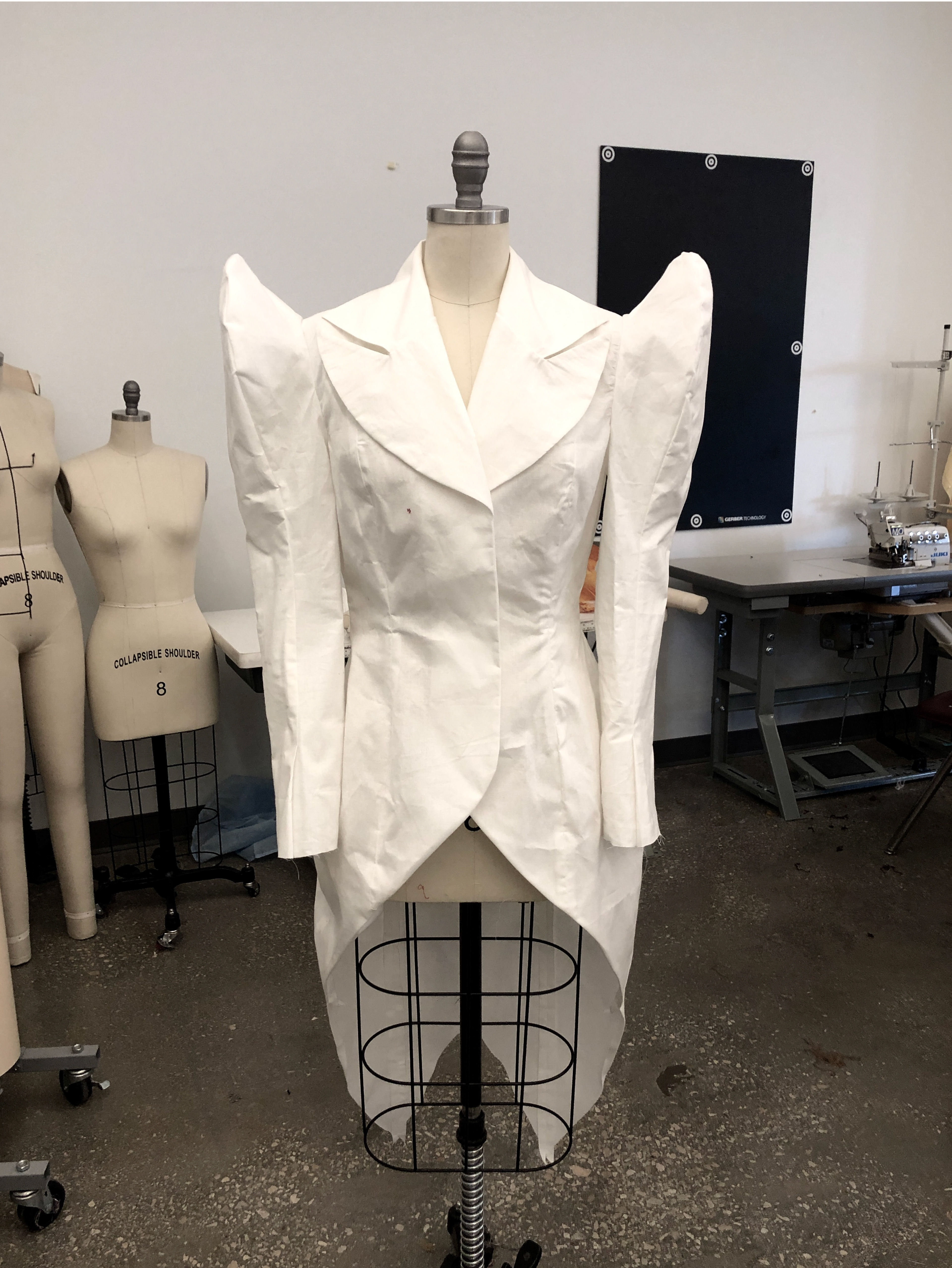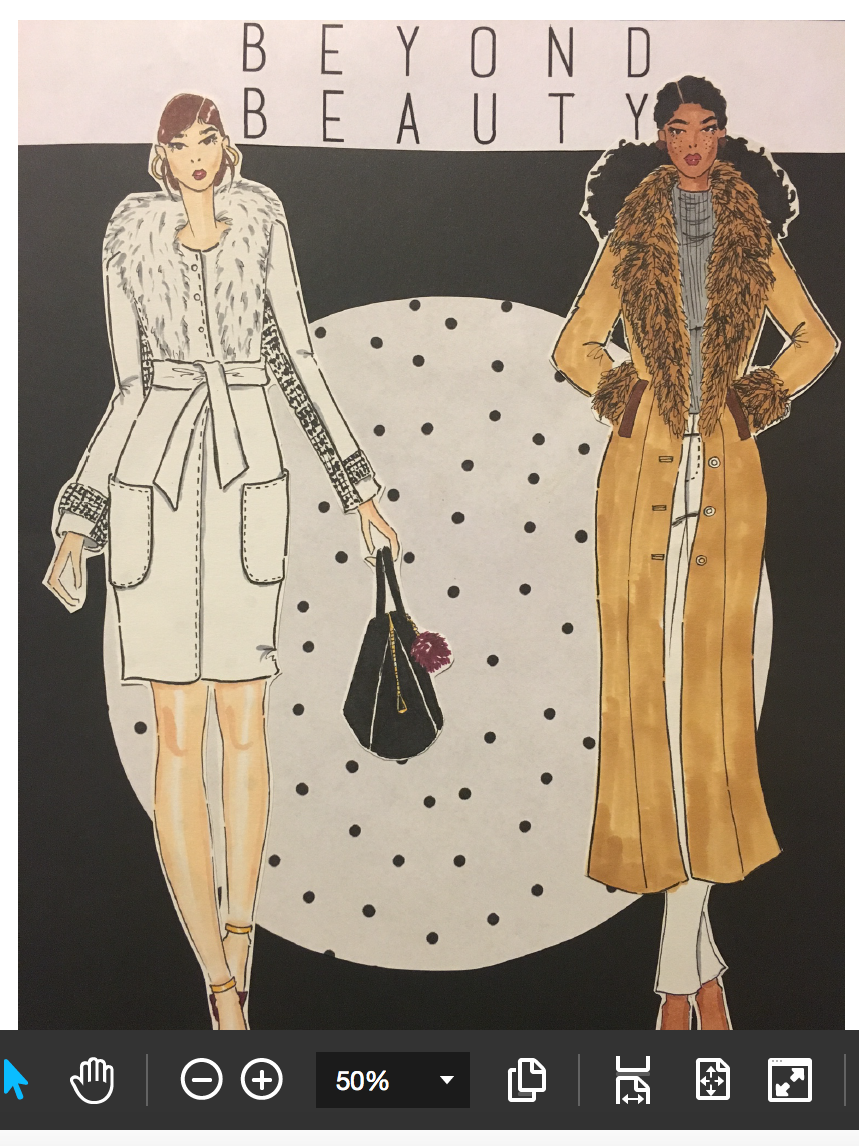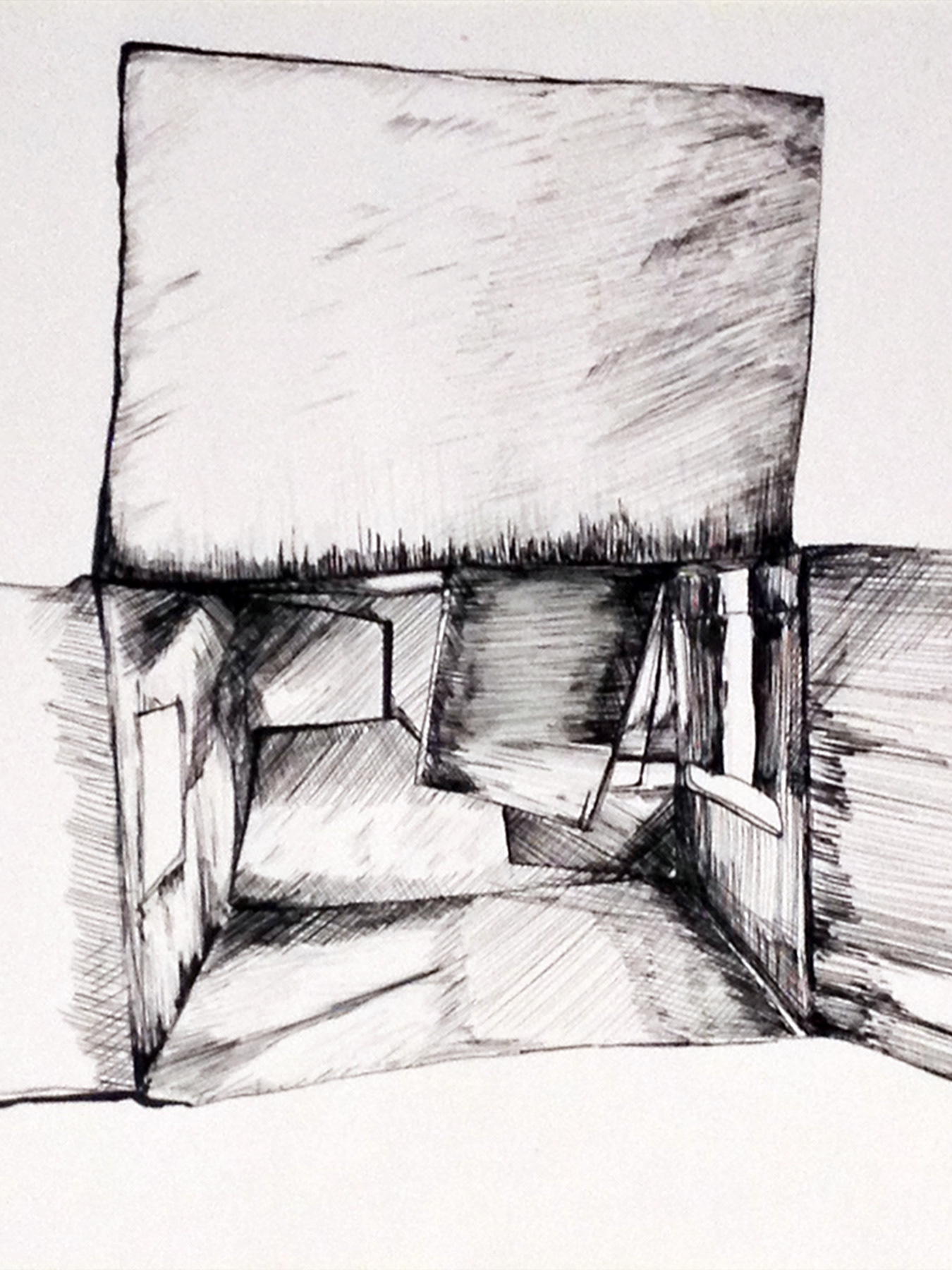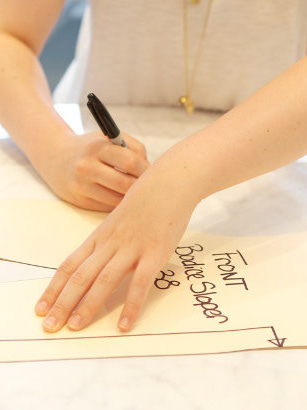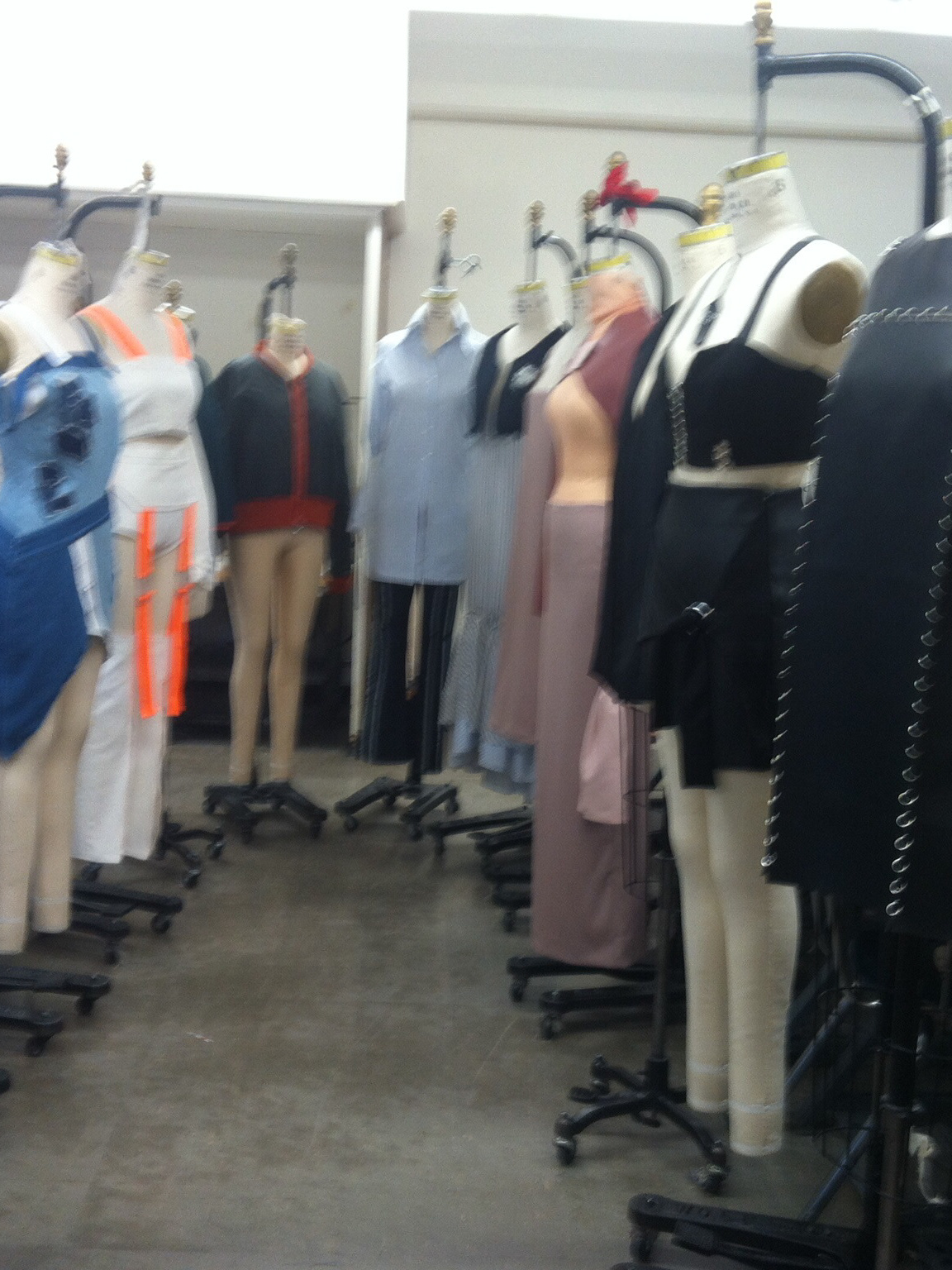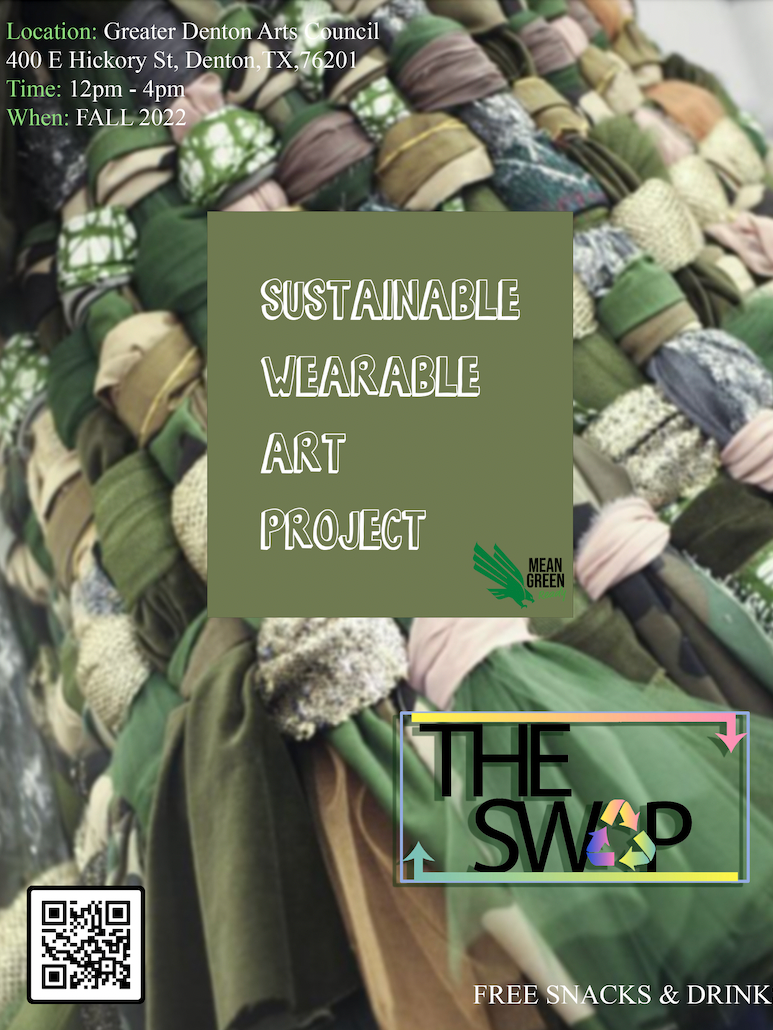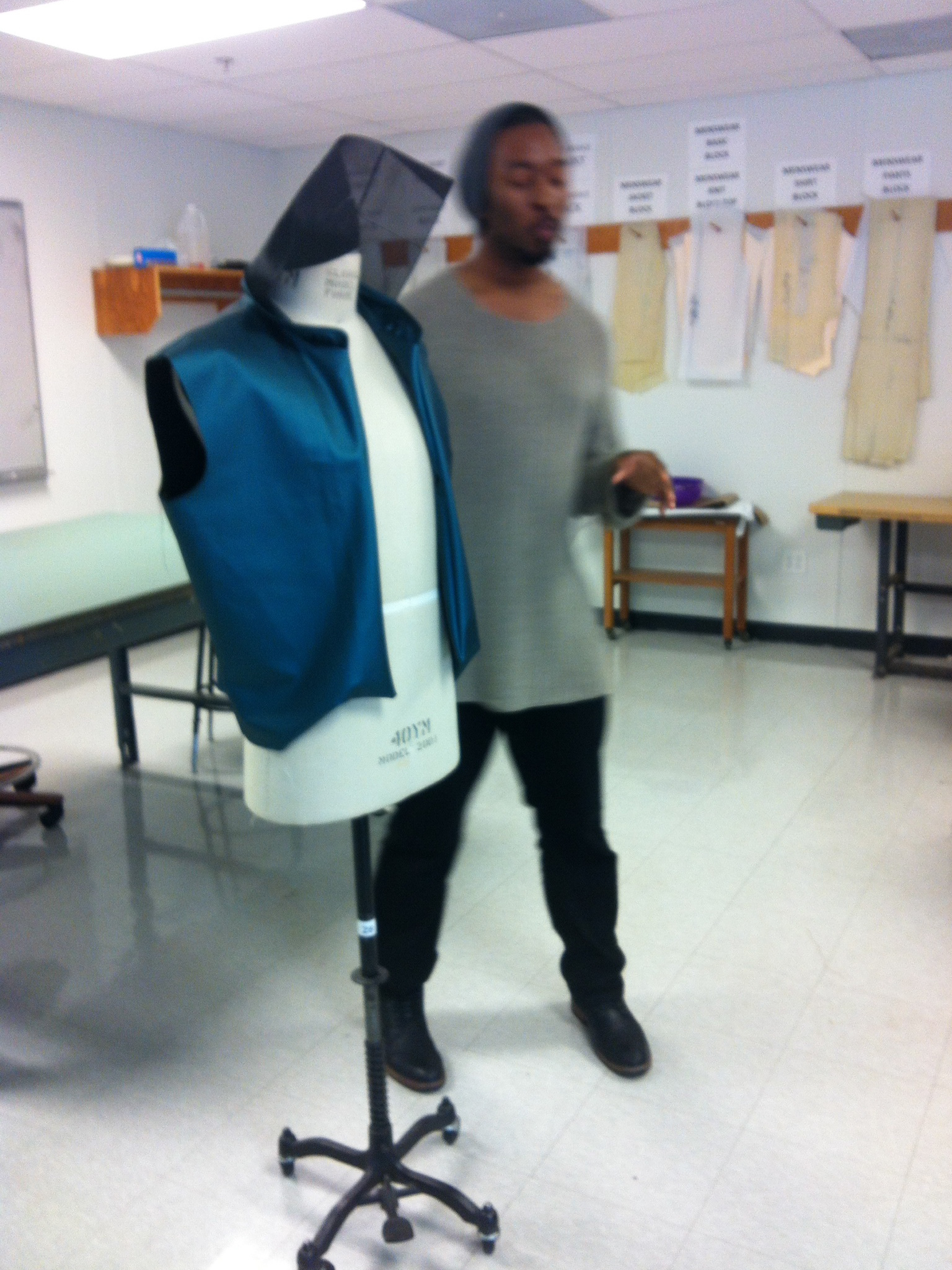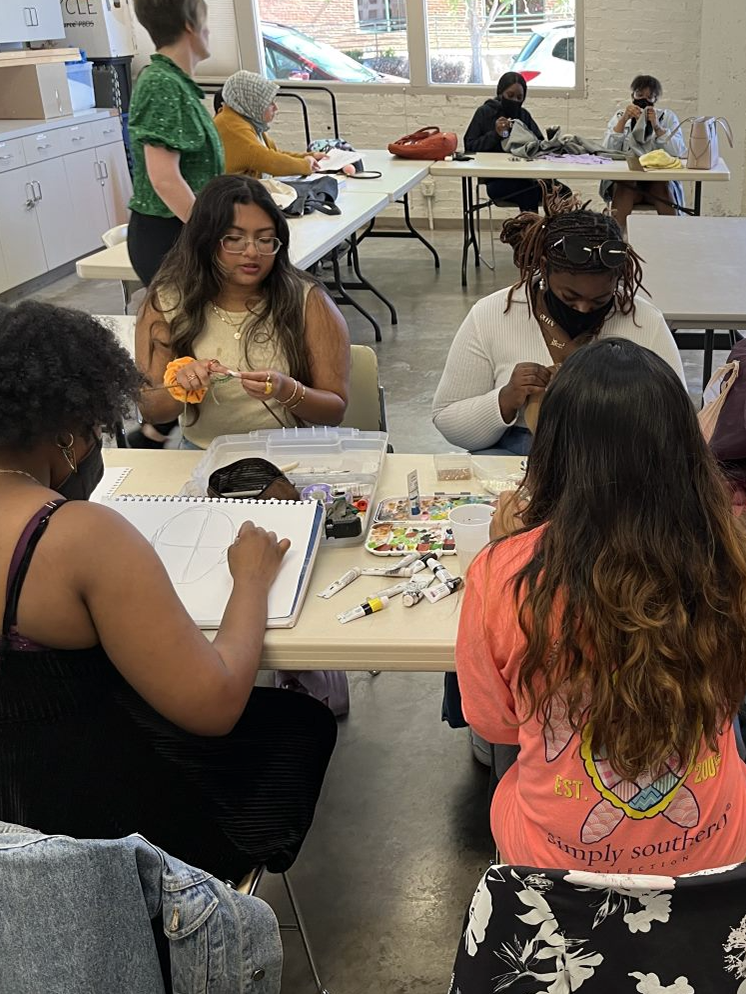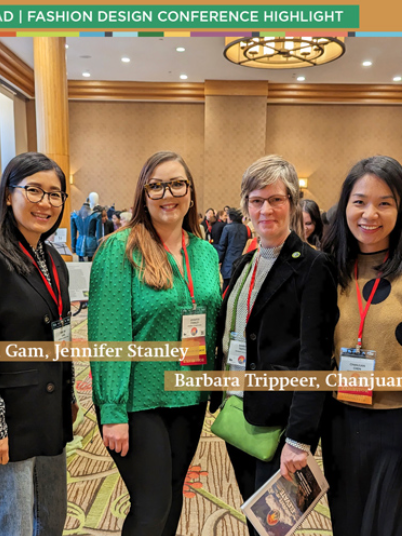Course Description
Drawing the fashion figure from the live model. Various media. Concentration on developing a personal style and proper presentation of designs for industry.
Course Objectives
Students participating in this course will be able to:
Understand and illustrate the fashion figure as appropriate to their chosen market segment
Effectively execute visual representations of various skin tones, facial features, body types, and appendages (arms, legs, hands feet) using a range of artistic mediums
Execute a range of techniques for communicating or rendering an assortment of textiles, textures, and patterns, using a variety of illustration mediums
Visually communicate garment construction details using industry standard flat sketch methodologies
Undertake a research process which includes curation of images into various categories and themes
Conceptualize cohesively merchandised garment collections based on designated themes
Visually represent original design concepts using both a sketchbook and a portfolio according to industry standards
Collection fashion illustrations:
Marker Renderings
Medium: Pen, Ink, and Marker techniques.
Project Assignment:
The last step of this process is to fully render your group of six cohesive ensembles representing your design concepts and the textile materials they encompass.
The goal is to fully illustrate a cohesive group of six related ensembles on your fashion figure.
Marker Illustration by sophomore student Alfredo Alfaro
Marker Collection Illustrations by sophomore Nikita Pokhrel
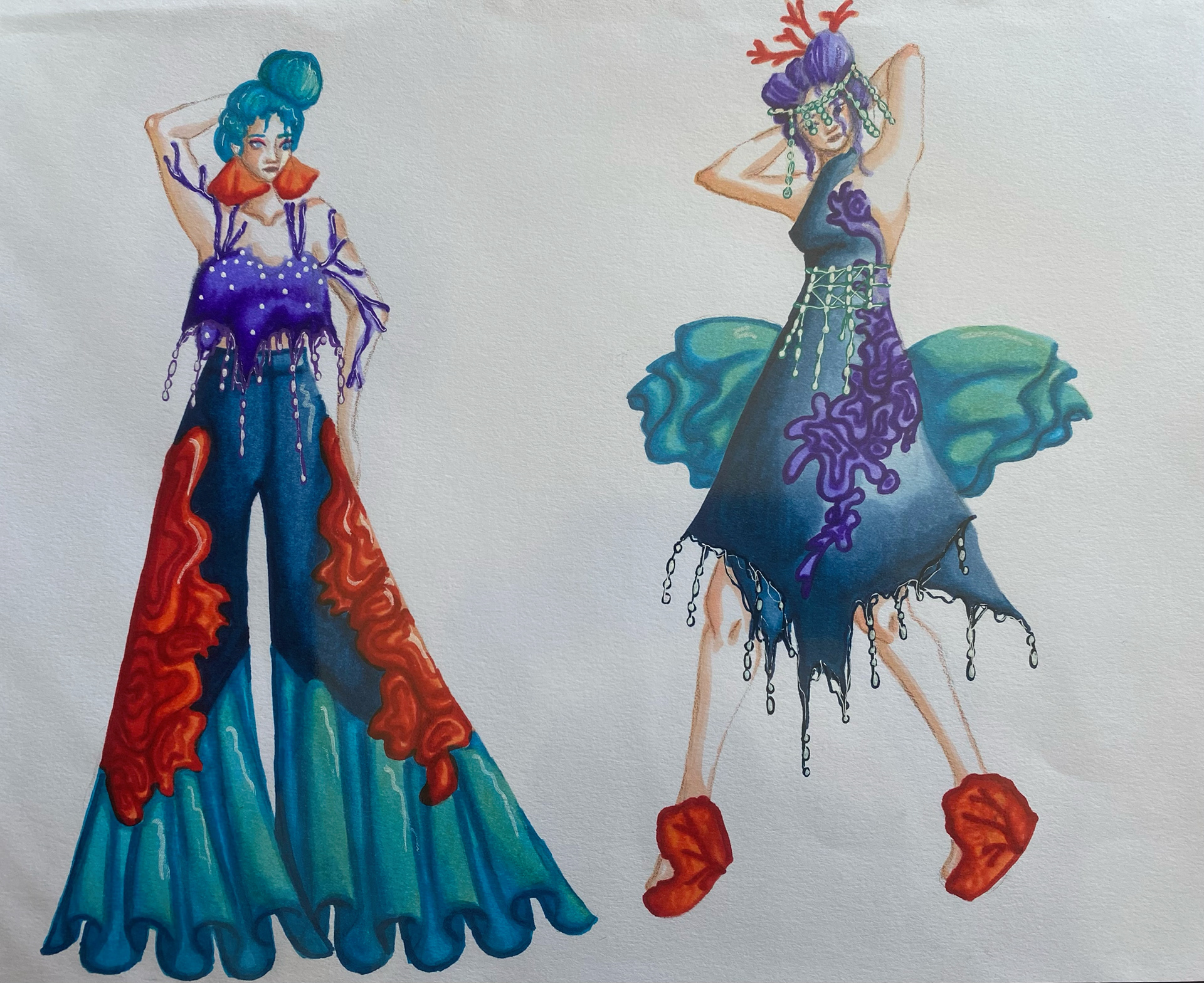
Marker Illustrations by student Bella DuBose
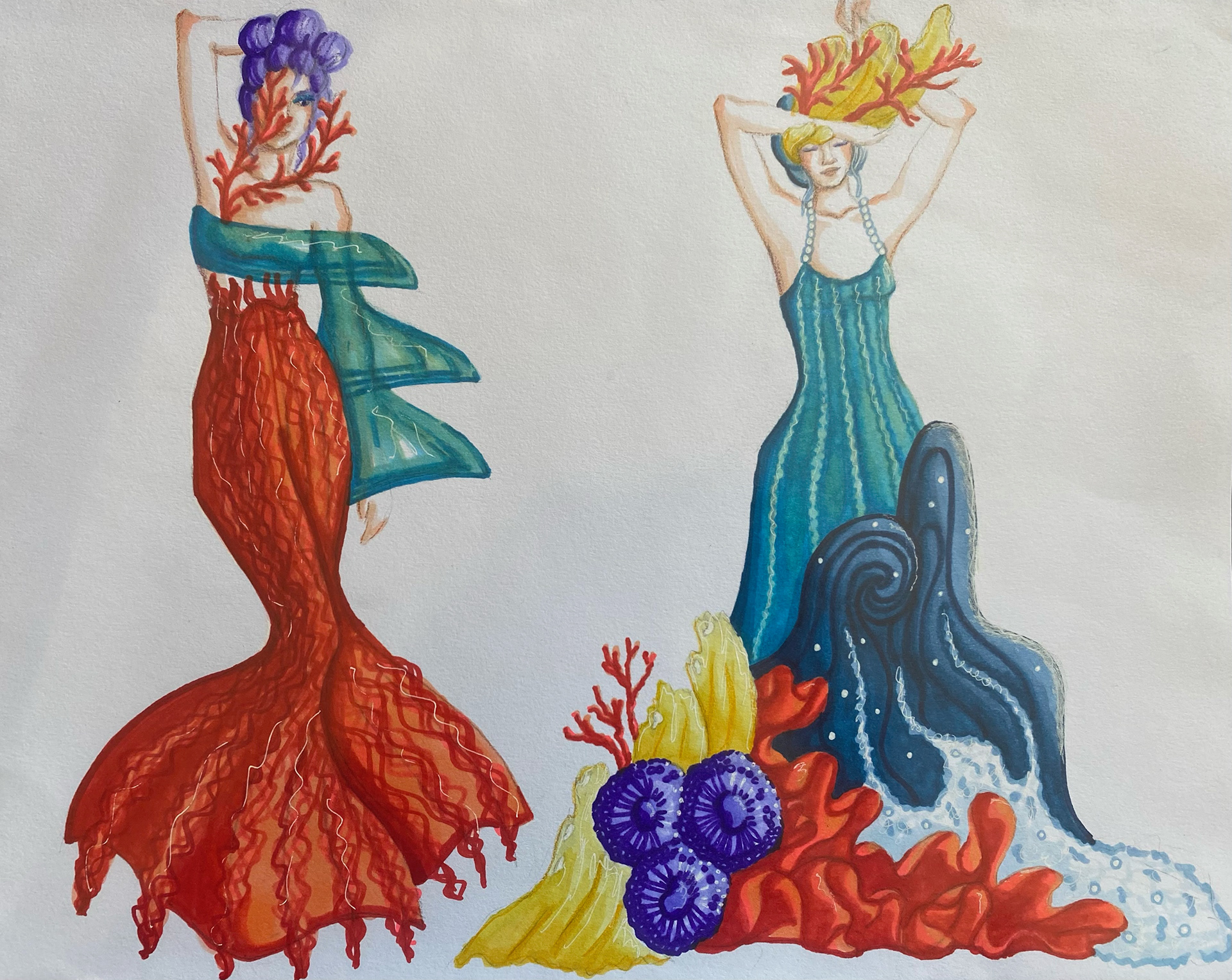
Marker Illustrations by student Bella DuBoose
Marker Illustrations by student Bella DuBose
Marker Illustrations by sophomore student Zayn Hassan.
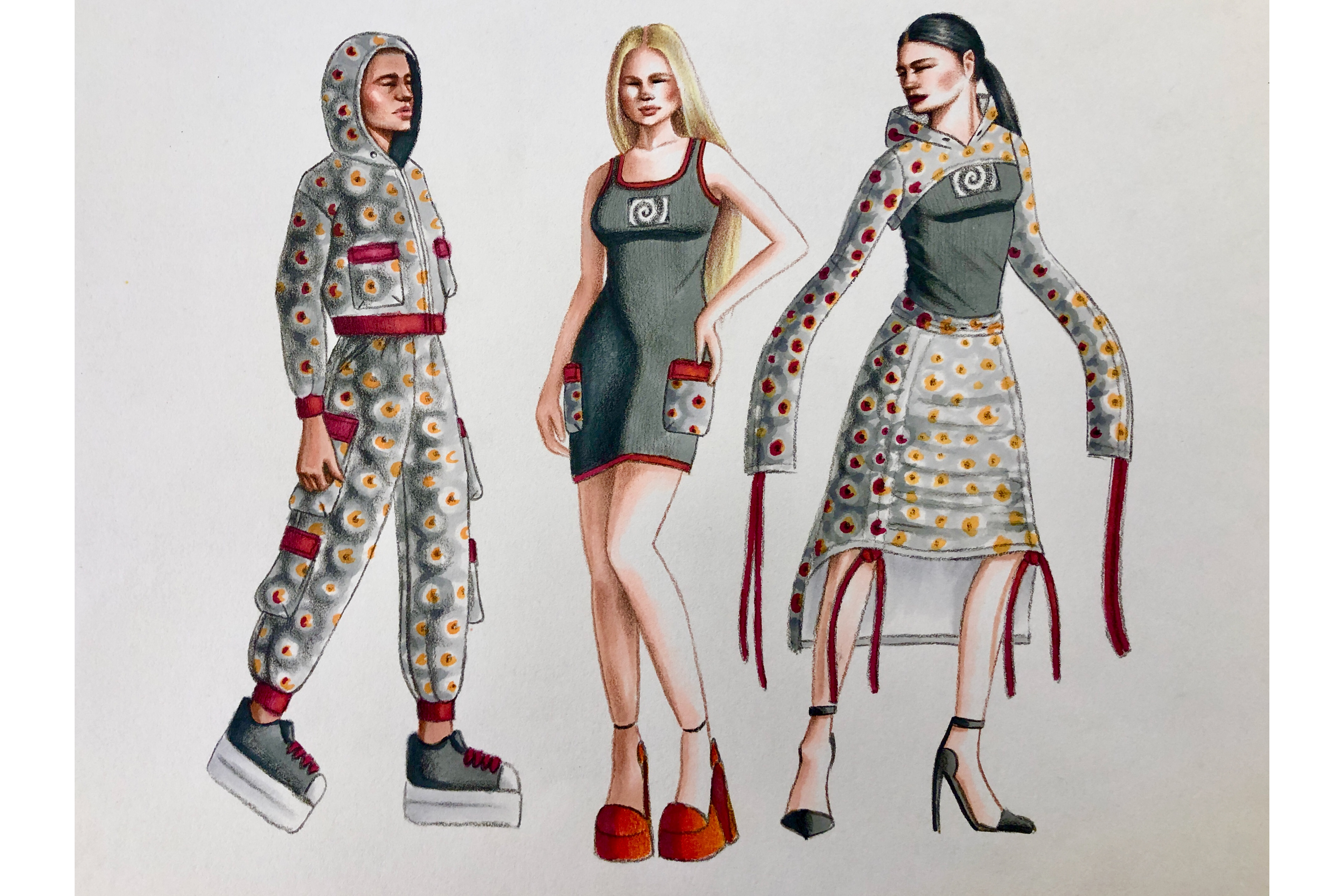
Marker Rendering by student Nash Harris
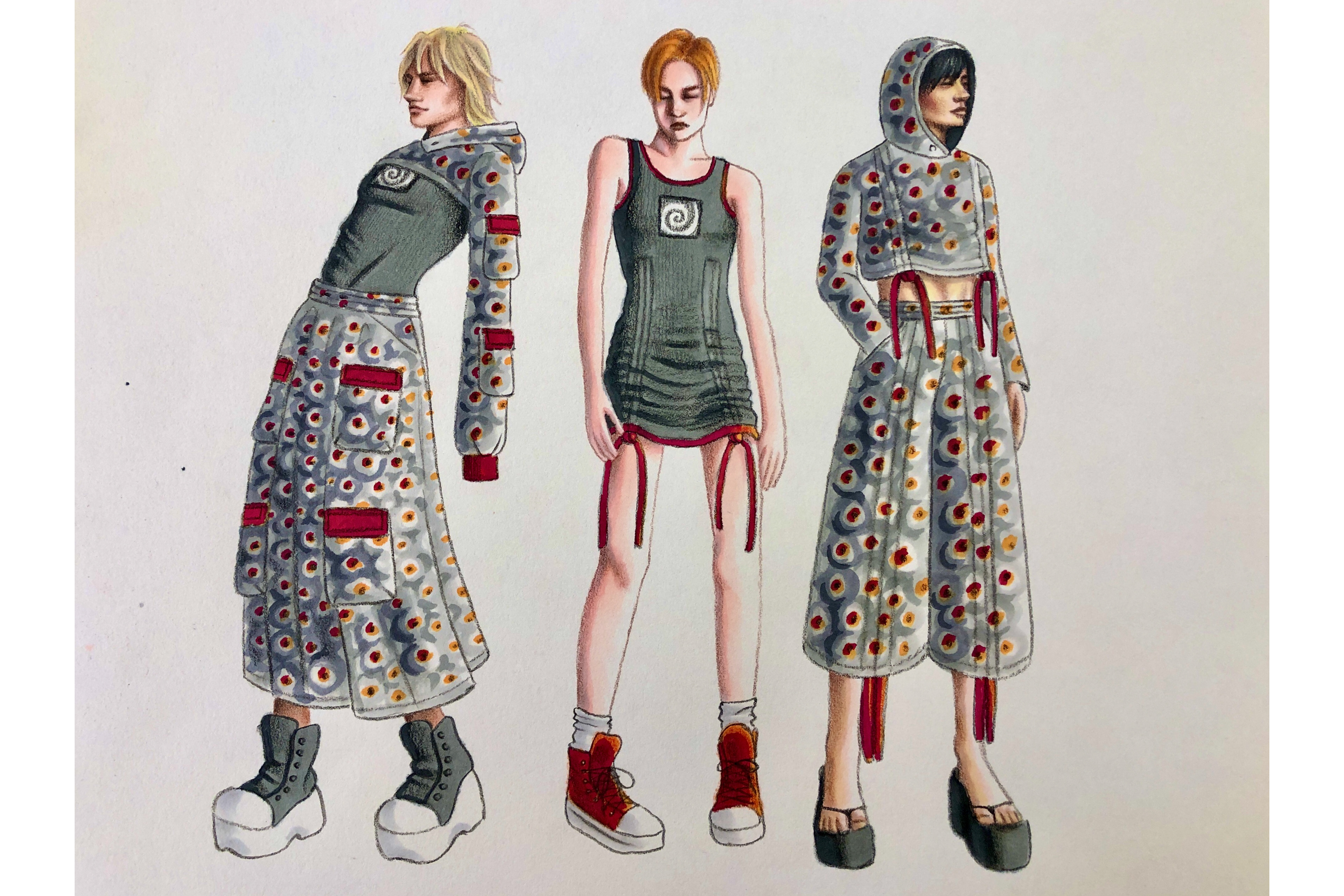
Marker Rendering by student Nash Harris
Marker Rendering by student Nash Harris
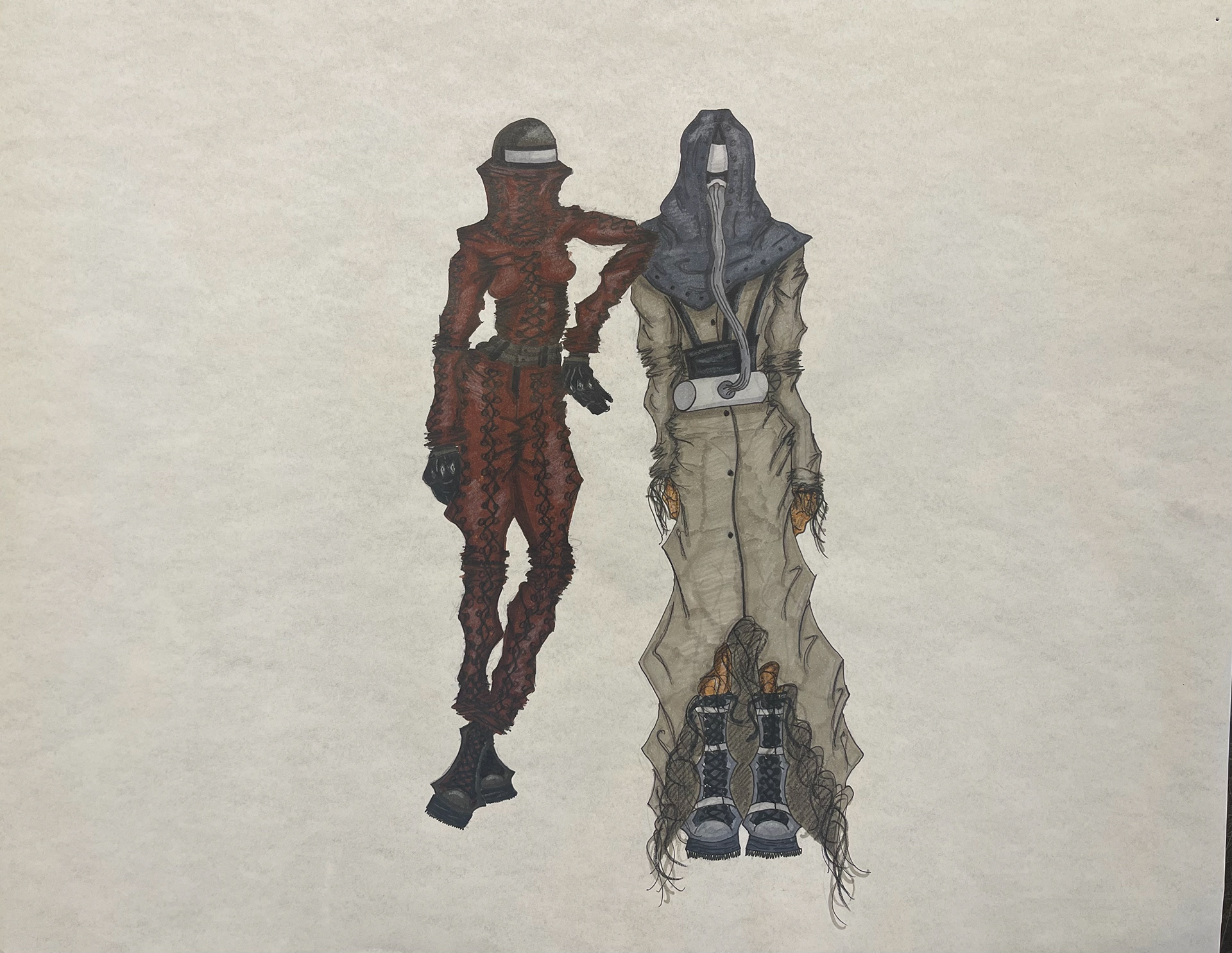
Marker Illustrations by student Tyler Luscombe
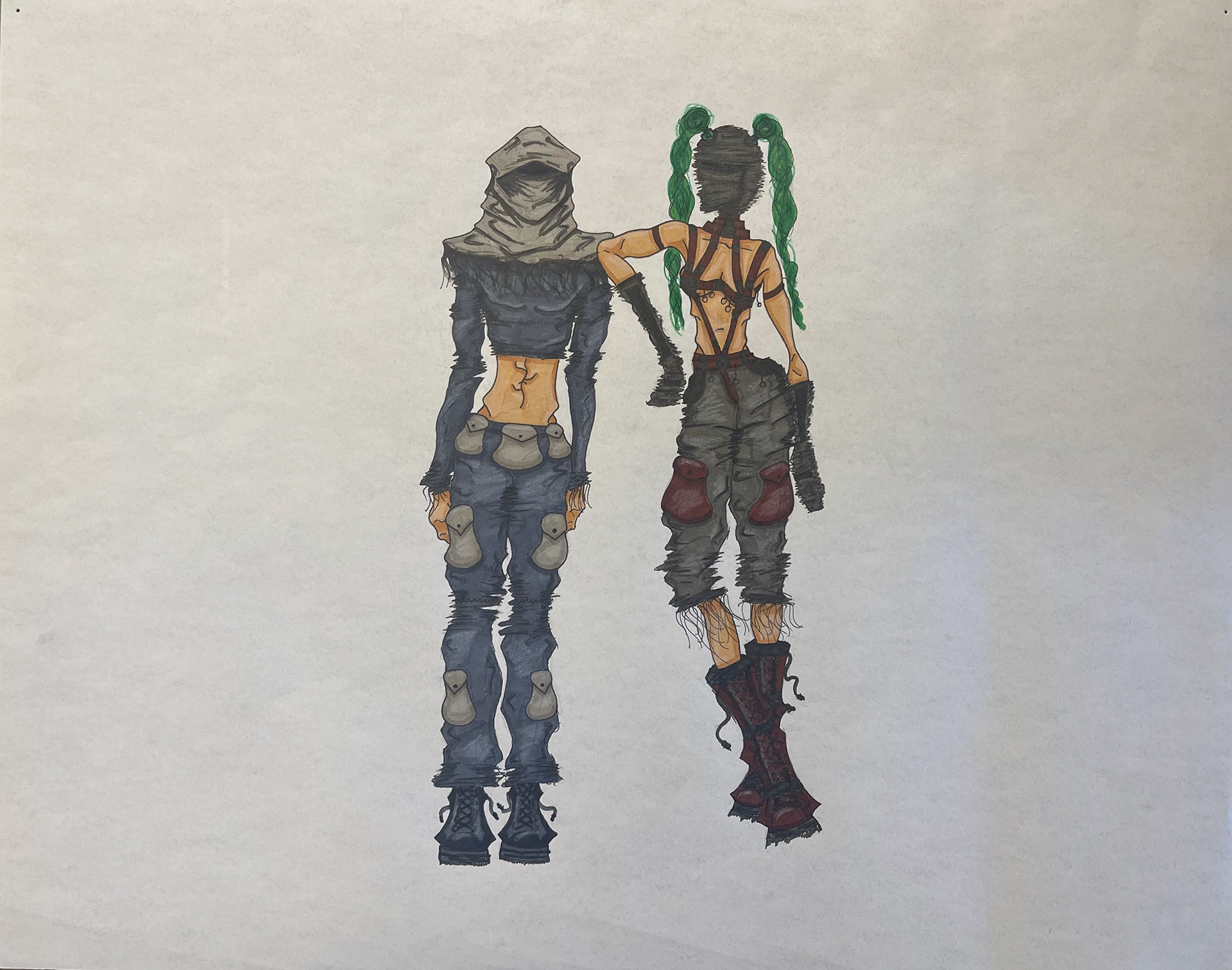
Marker Illustrations by student Tyler Luscombe

Flat Sketches by Tyler Luscombe

Flat Sketches by Tyler Luscombe
Marker Illustrations ob Futurism Collection by student Tyler Luscombe
Marker Rendering by sophomore student Nidia Fuentes
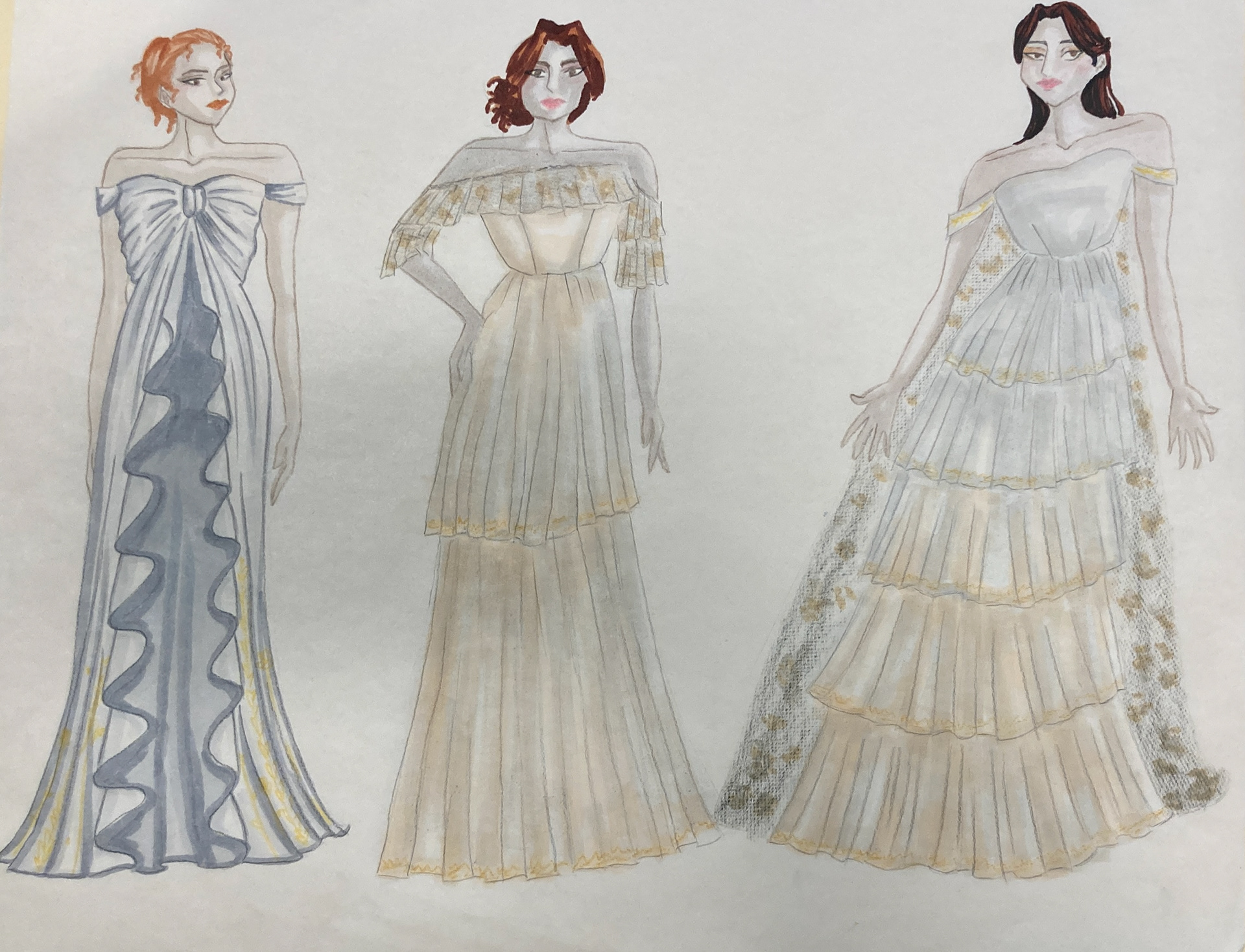
Marker Illustrations by Jubi. Valadez.

Flat Sketches by Jubi. Valadez.
Marker Illustrations by Jubi. Valadez.
Watercolor Illustrations by sophomore student Aaliyah Uzzel.
Project Brief:
Final Project: Watercolor Renderings
The Final Concept Collection for Fashion Drawing includes an assortment of related garments (group of 6 - 10 related ensembles) which must rendered using watercolor illustration techniques. The assortment must also include at least one knit sweater in the group.
Submission Requirements Include the Following Items:
Mood/Concept Board
Fabric Menu
Watercolor Illustrations
Flat Sketches
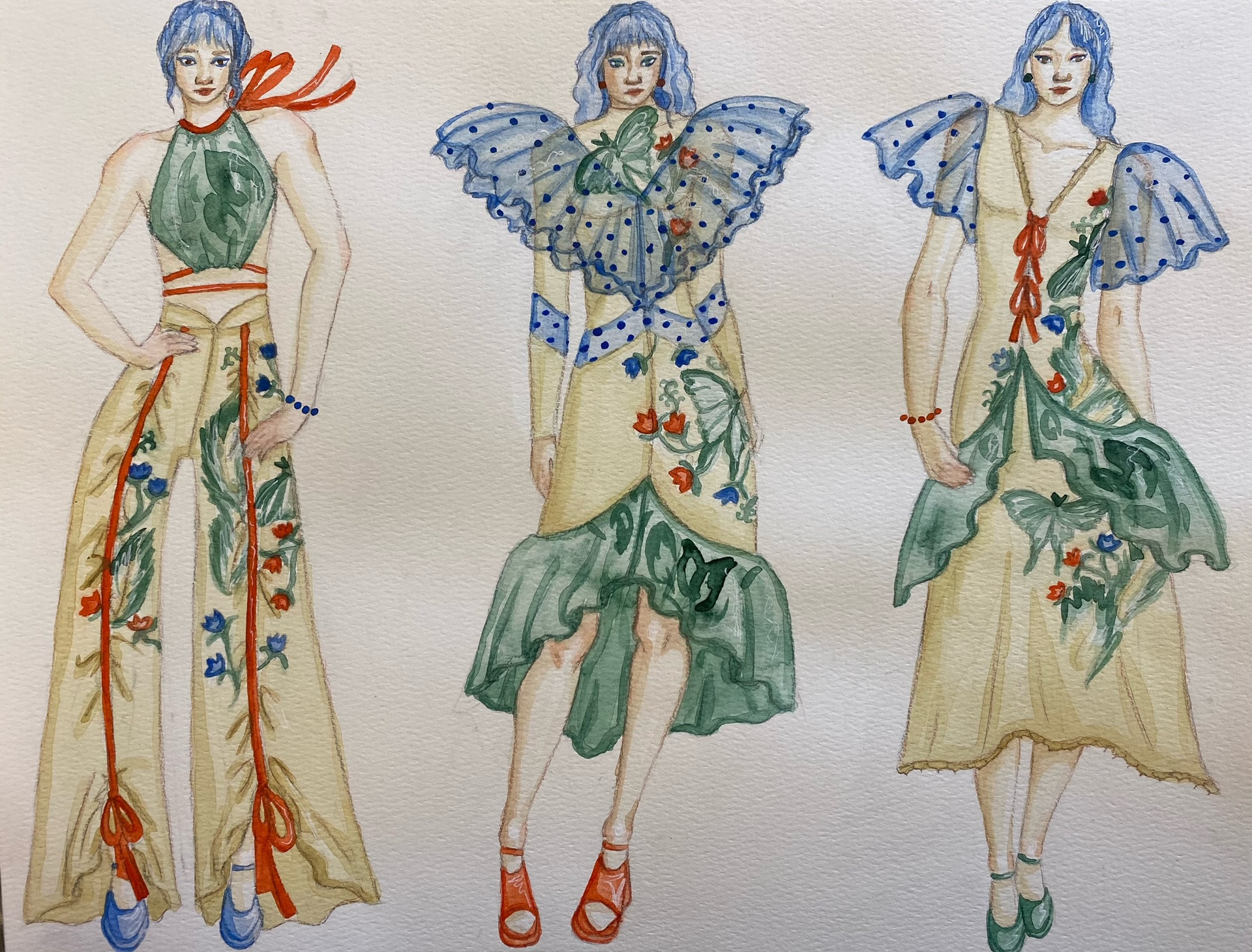
Watercolor Illustrations by student Bella Dubose
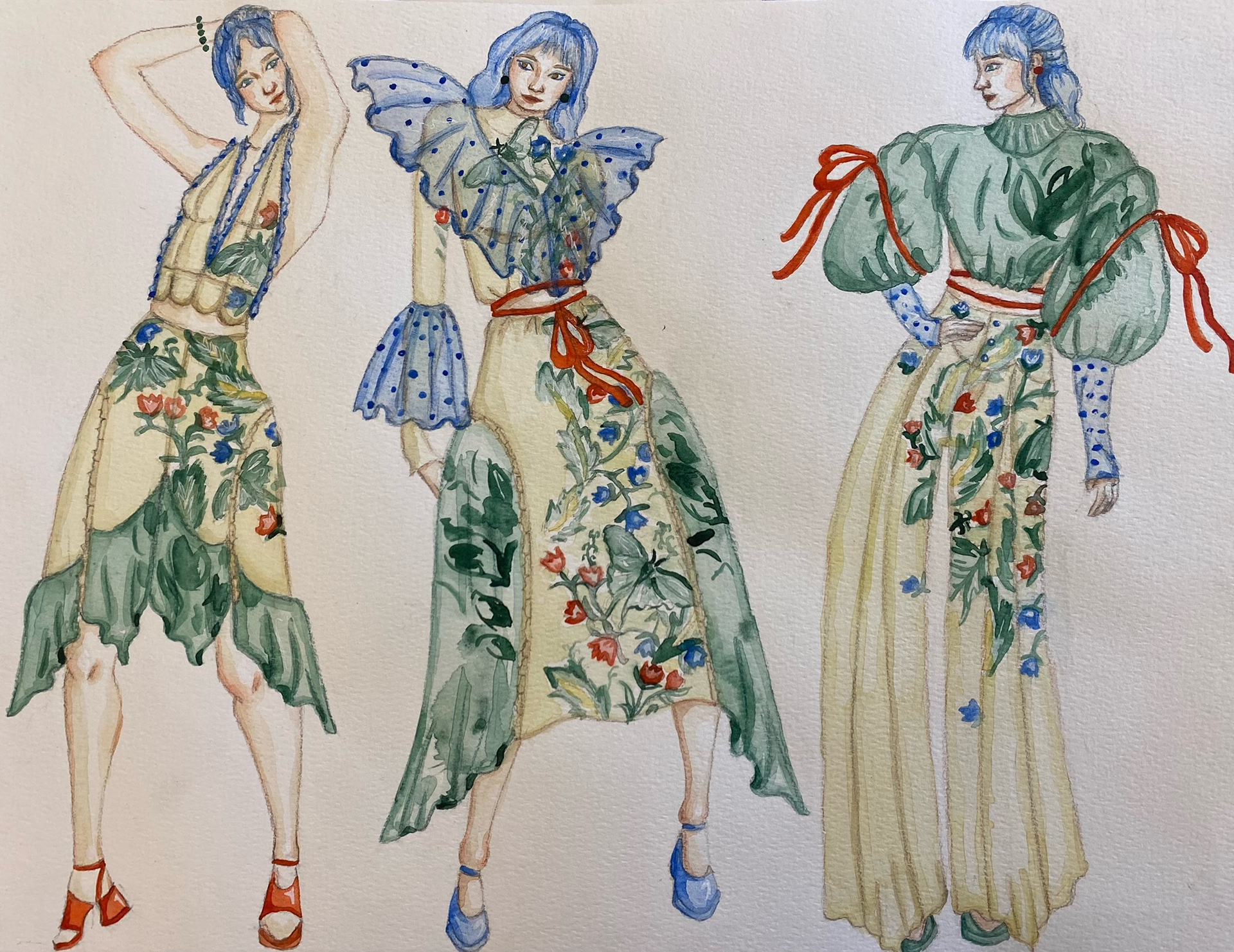
Watercolor Illustrations by student Bella Dubose
Watercolor Illustrations by student Bella Dubose
Futurism Collection illustrated in Watercolors by Phat Nguyen
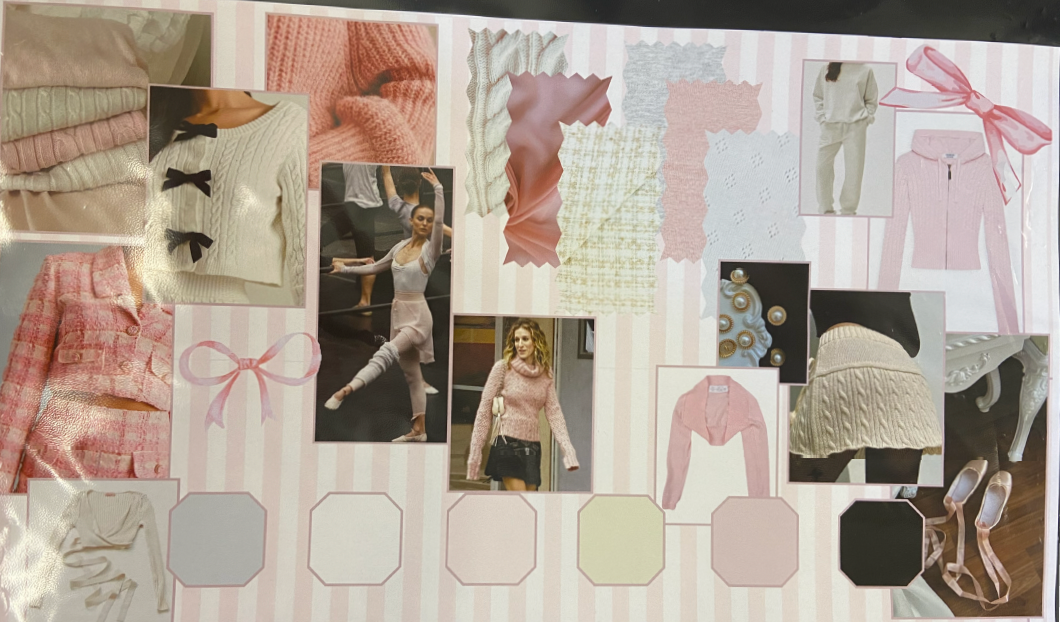
Mood Board by sophomore Madeleine Hale

Illustrations by sophomore Madeleine Hale
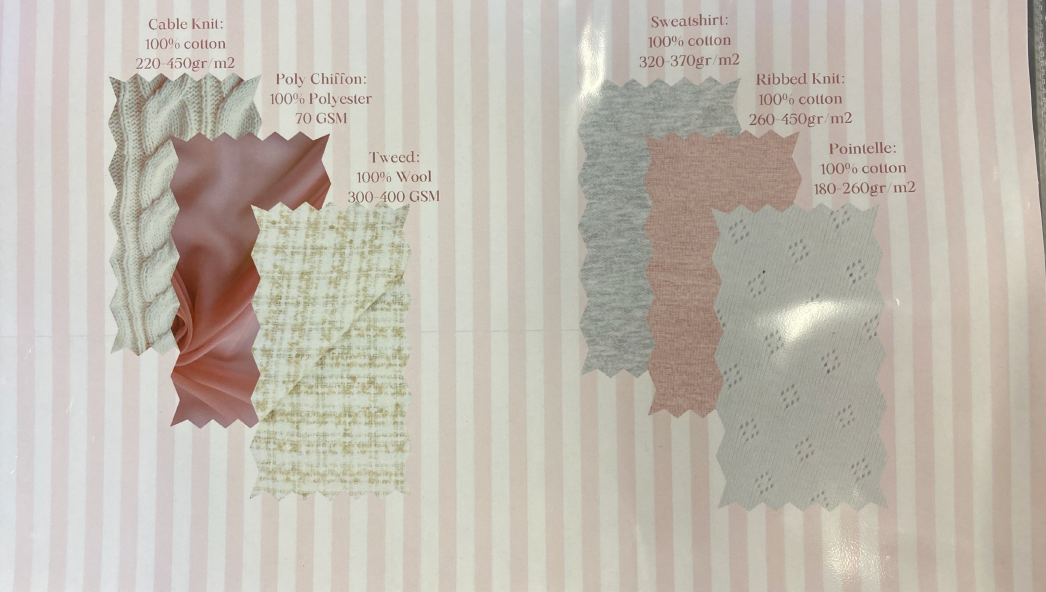
Fabric menu by student Madeleine Hale
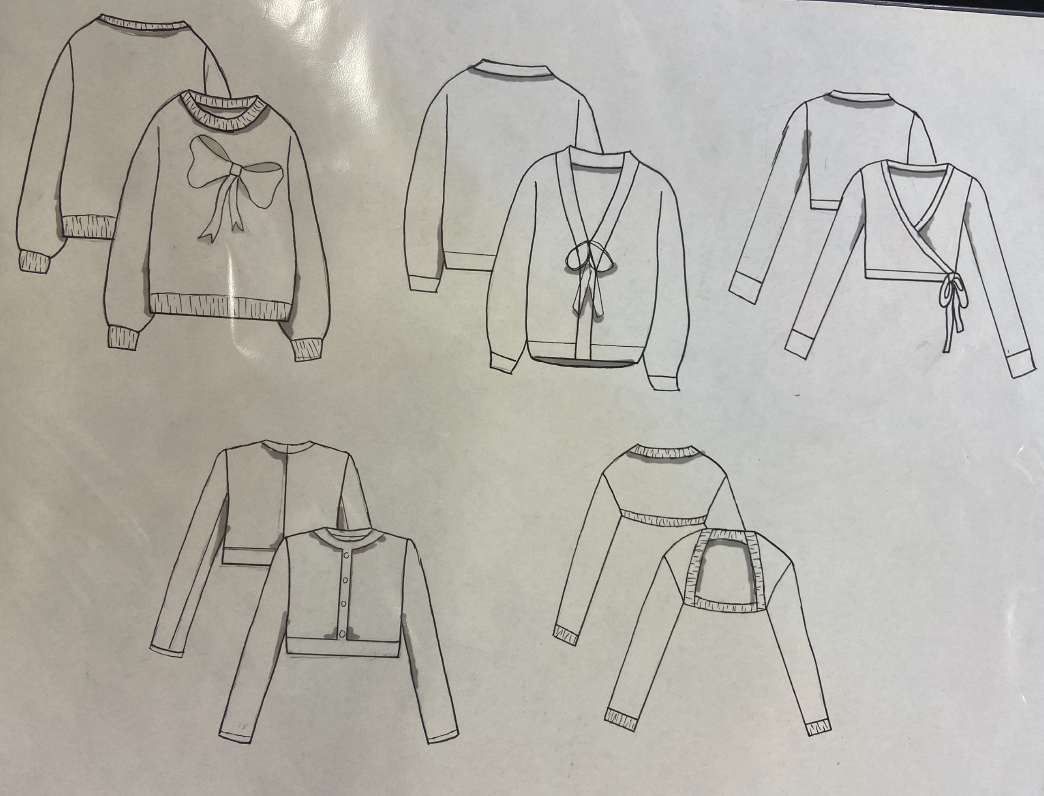
Flat Sketch Line Sheet by student Madeleine Hale
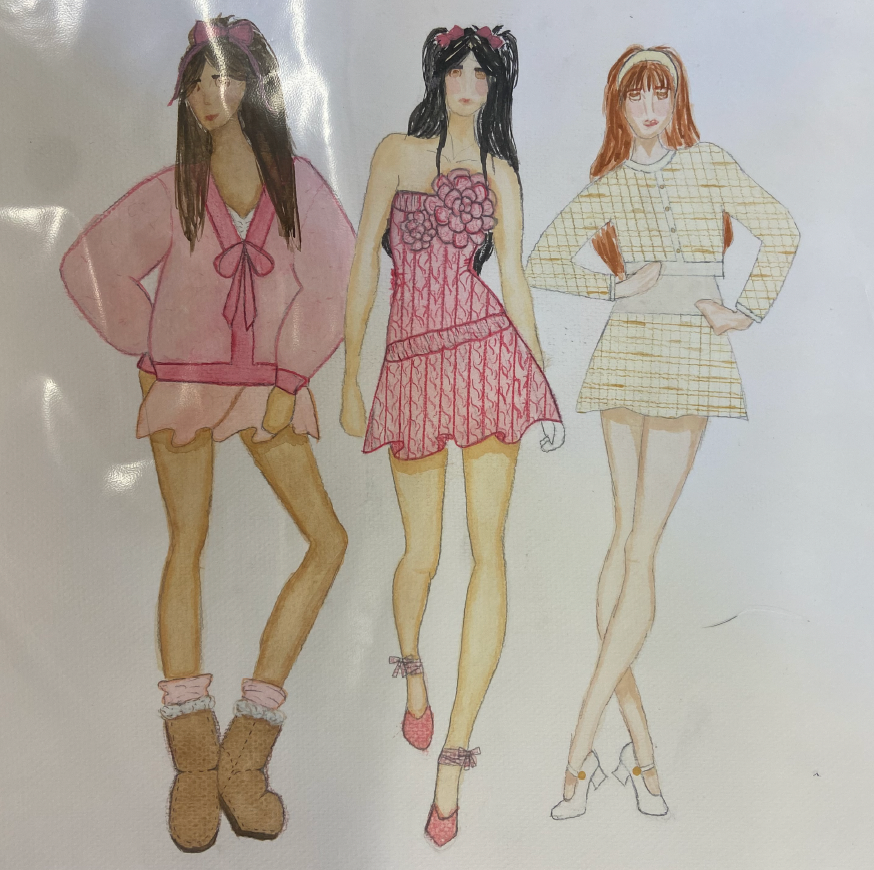
Illustrations by student Madeleine Hale
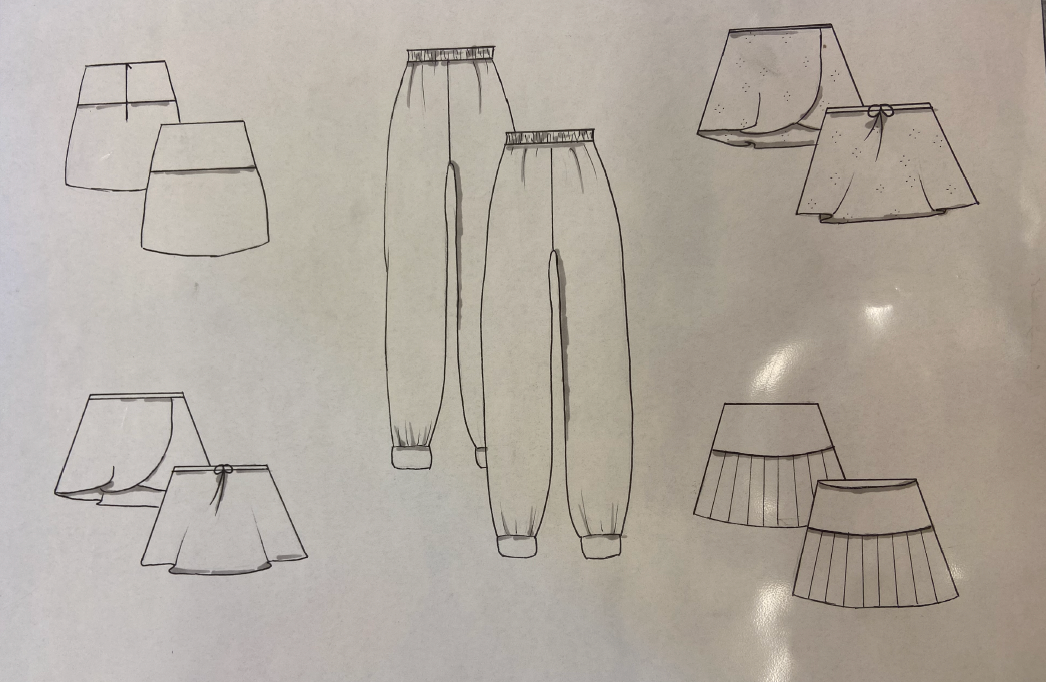
Flat Sketch Line Sheet by student Madeleine Hale
Final Collection Project by student Madeleine Hale
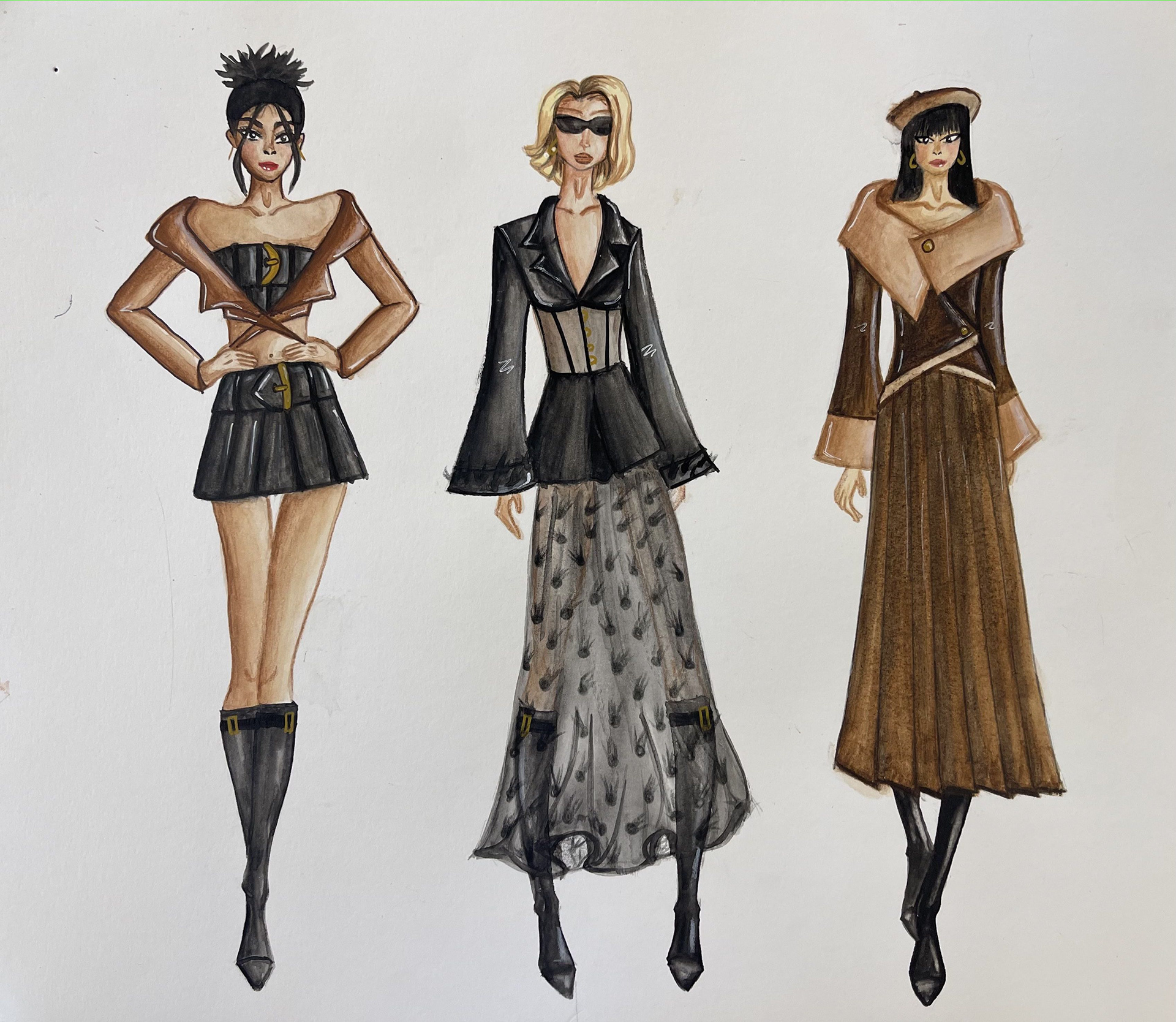
Watercolor Illustrations by student Nikita Pokhrel
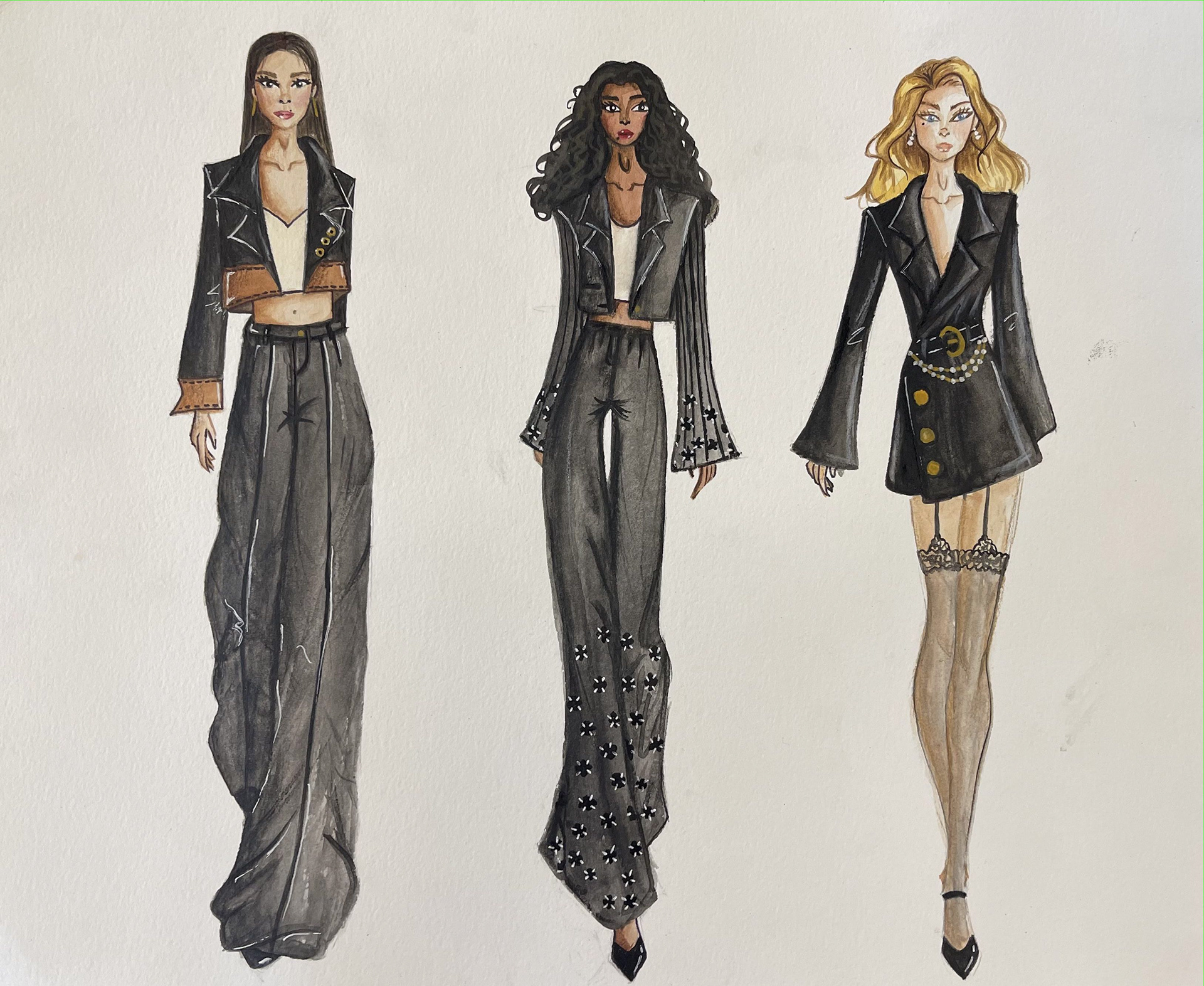
Watercolor Illustrations by student Nikita Pokhrel
Watercolor Illustrations by student Nikita Pokhrel

Collection Mood Board by sophomore Isabella Murphy
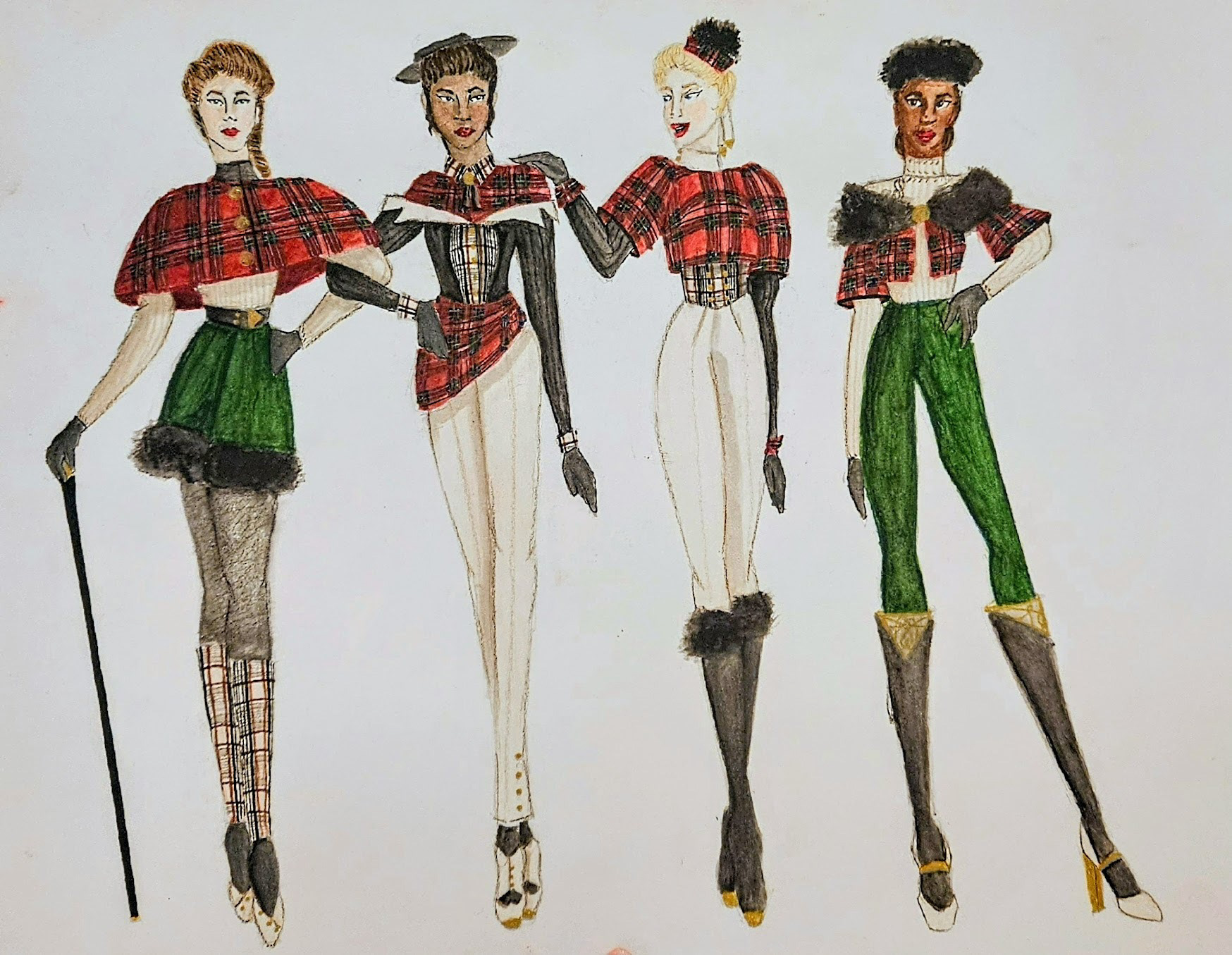
Watercolor Illustrations by sophomore Isabella Murphy
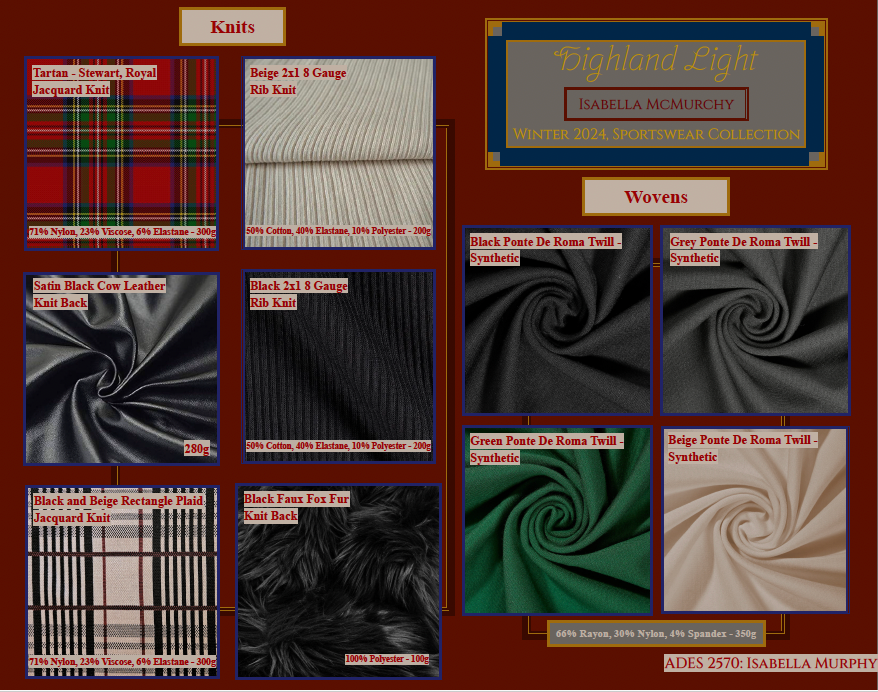
Collection Fabric menu by sophomore Isabella Murphy
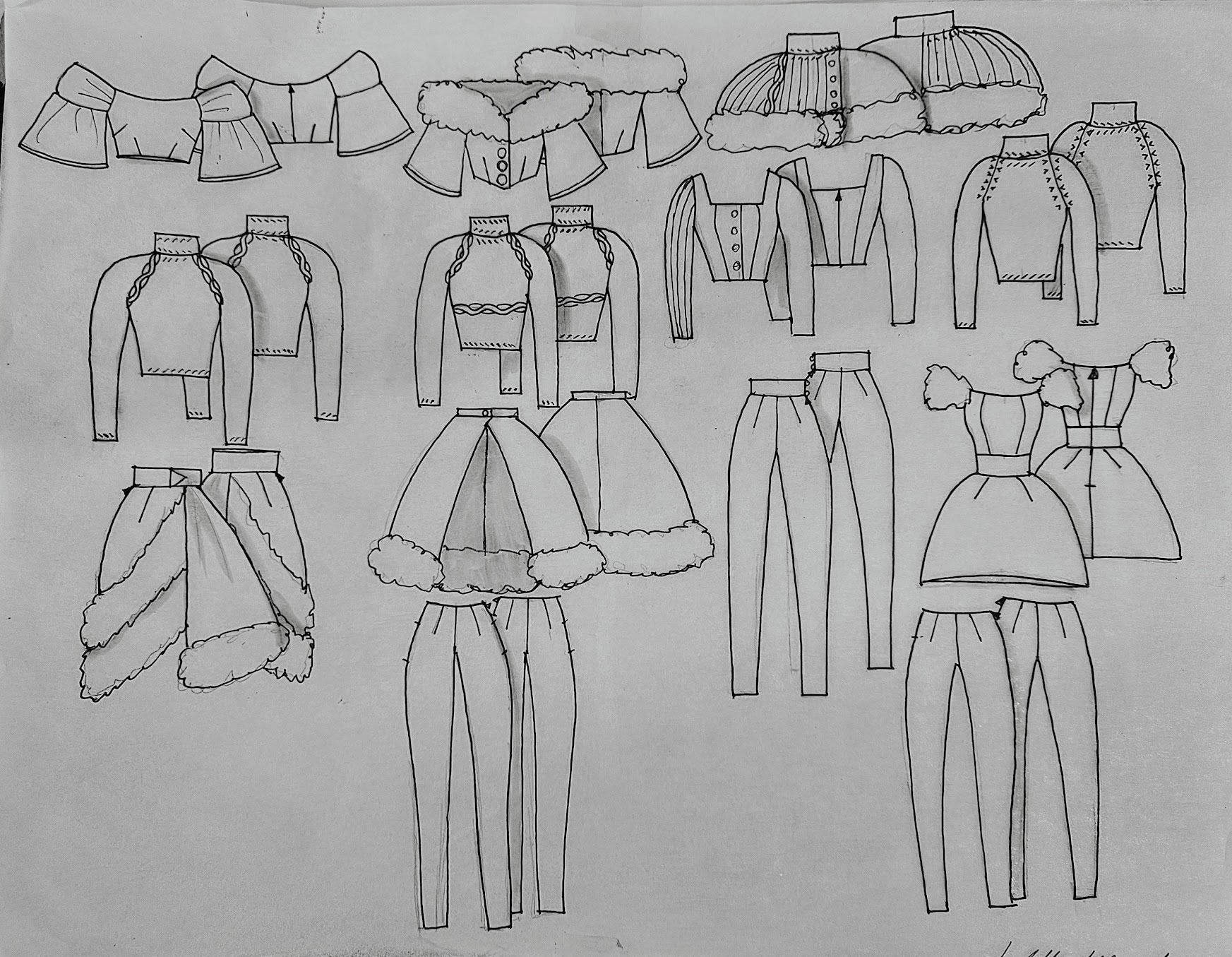
Flat Sketch Line Sheet by sophomore Isabella Murphy
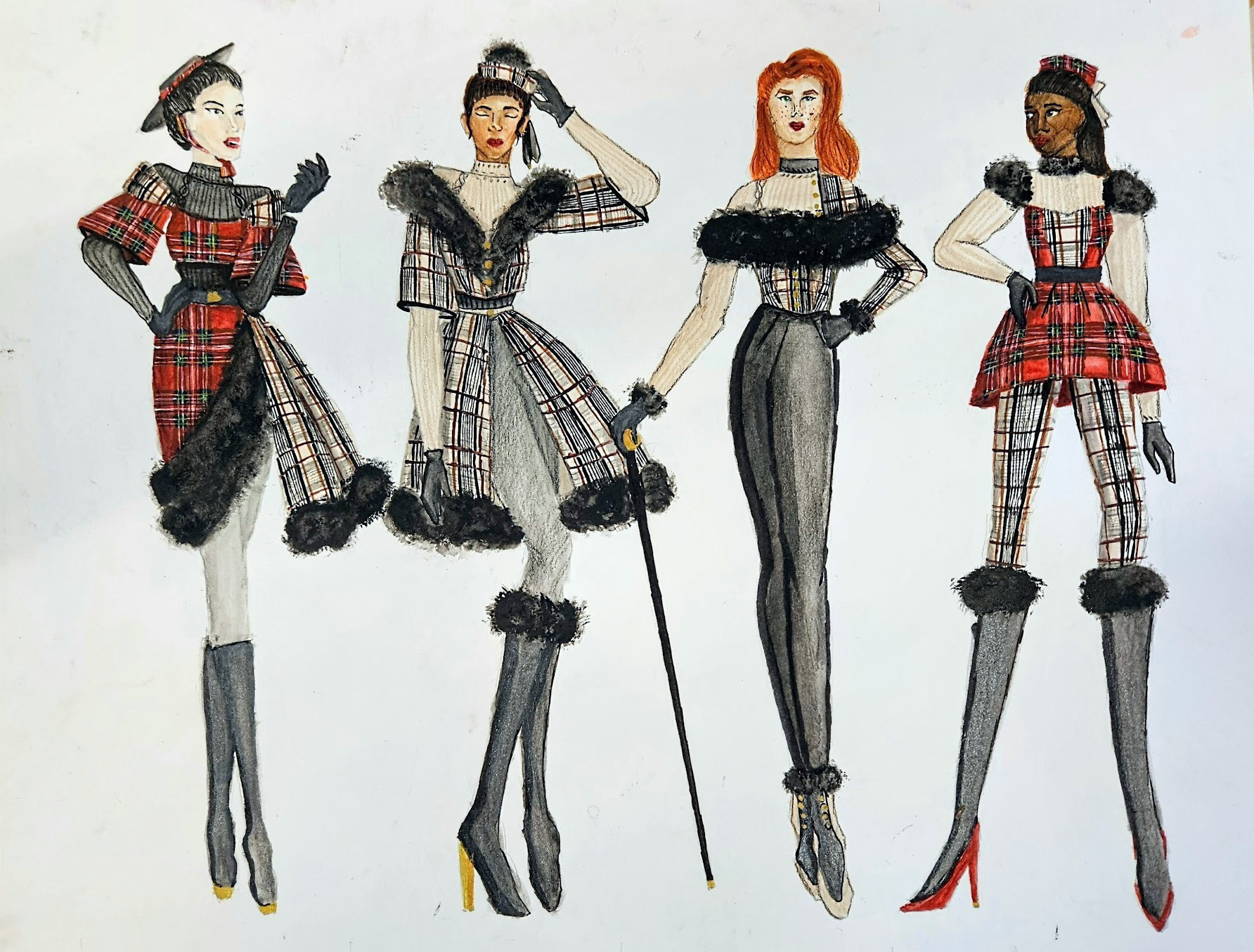
Watercolor Illustrations by sophomore Isabella Murphy
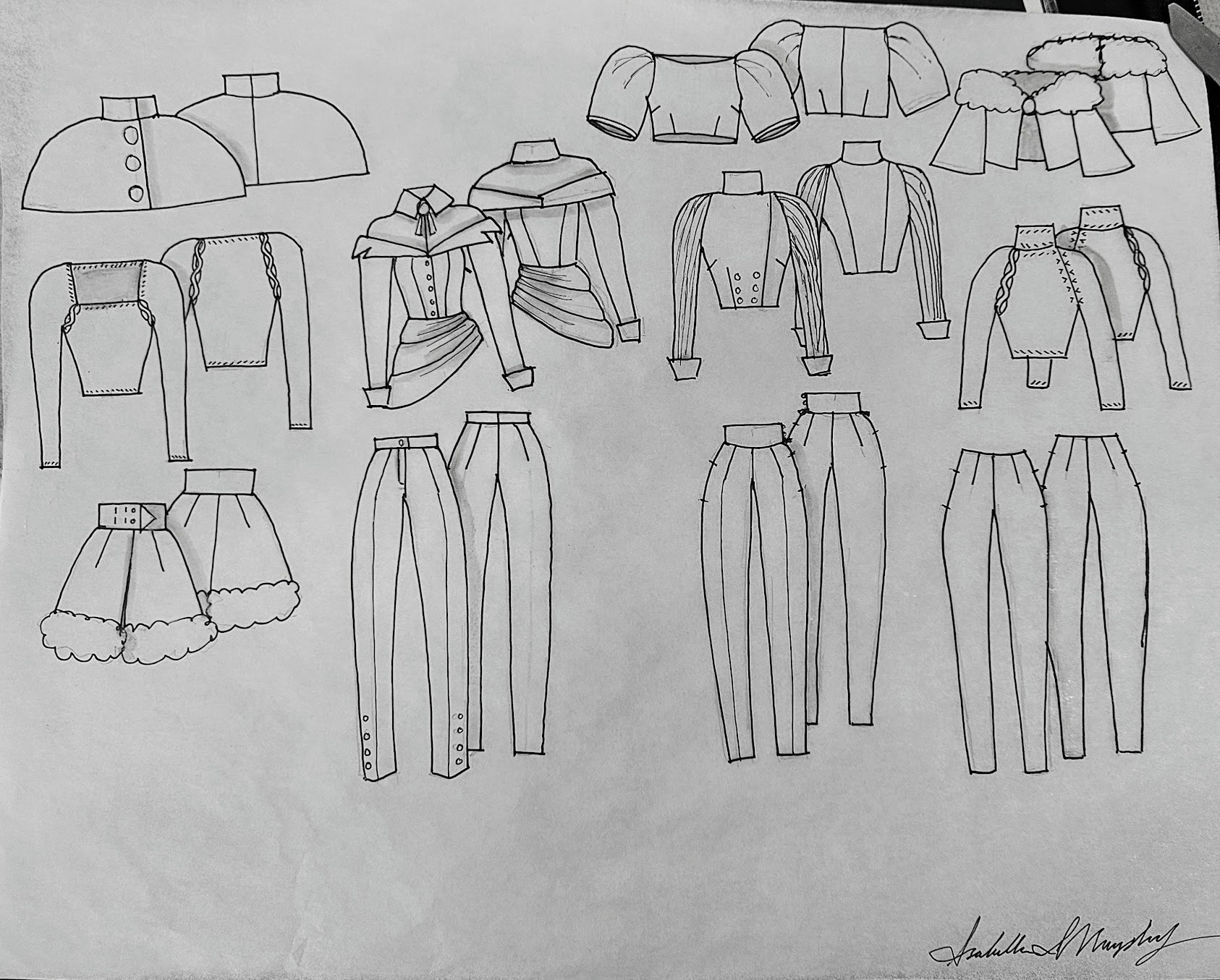
Flat Sketch Line Sheet by sophomore Isabella Murphy
Example of Final Collection by student Isabella Murphy
Watercolor Illustrations by student Jake Nguyen

Watercolor Rendering by sophomore Ben Arevalo

Watercolor Collection by student Ben Arevalo
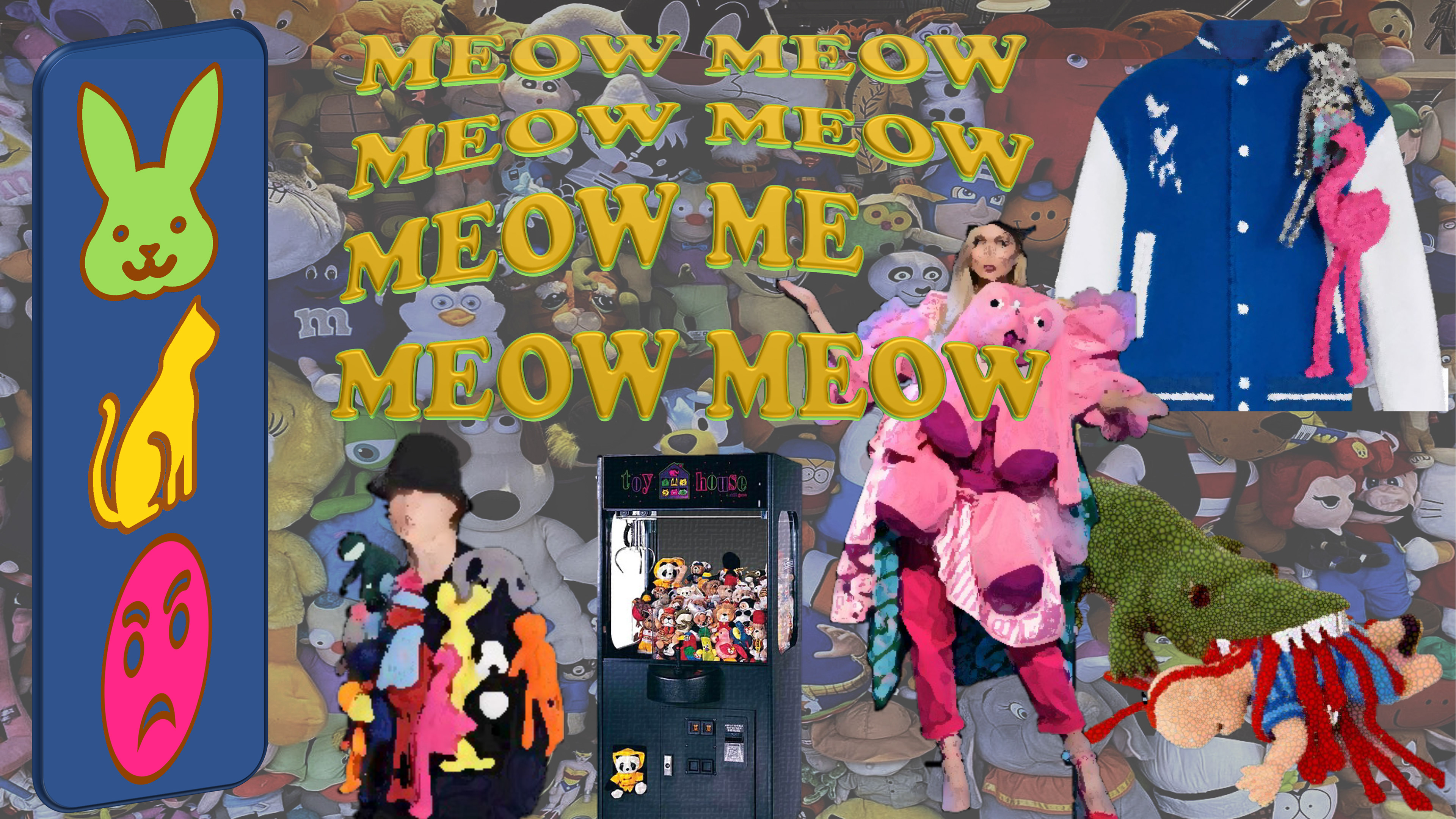
Mood Board by student Ben Arevalo
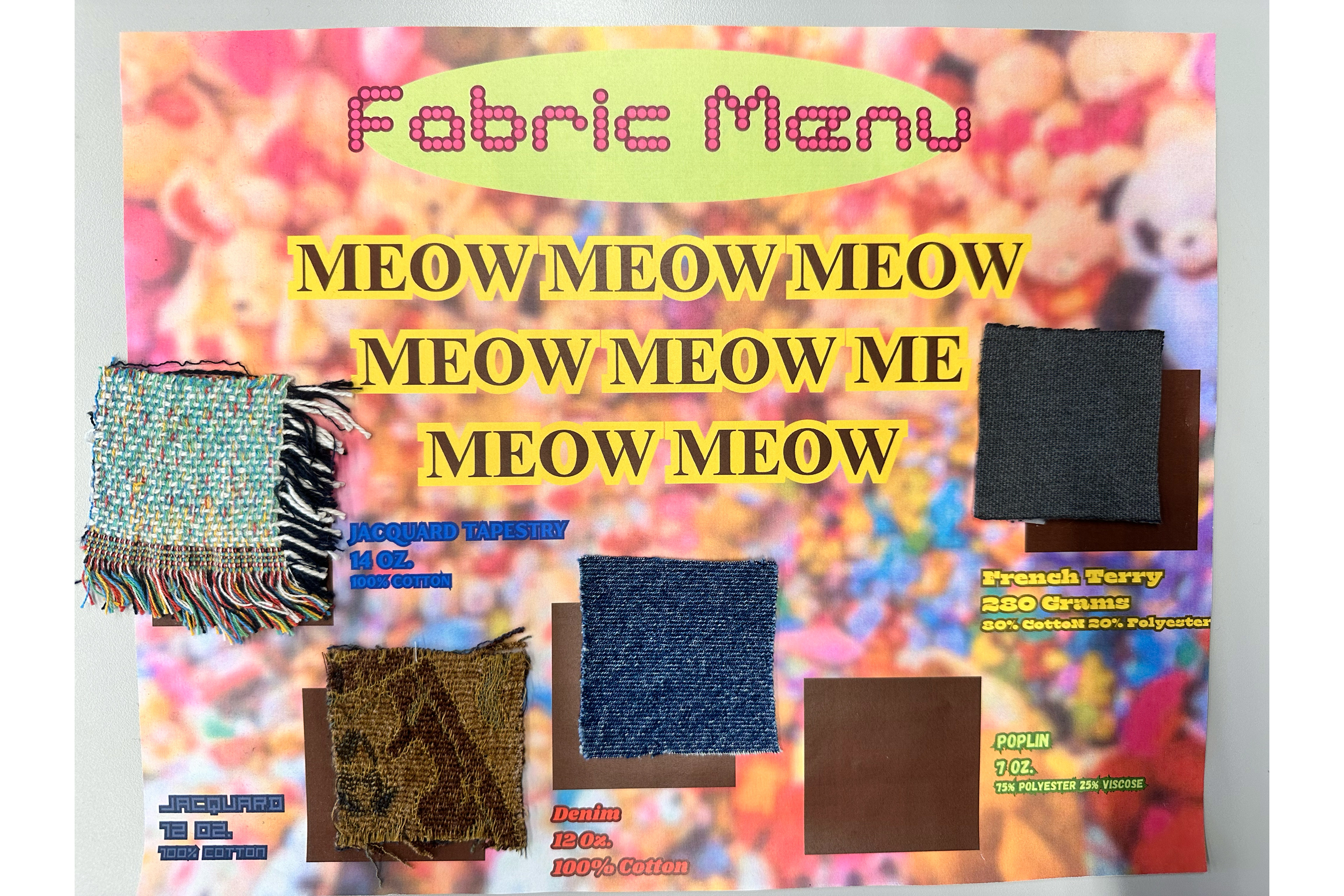
Fabric Menu by sophomore student Ben Arevalo
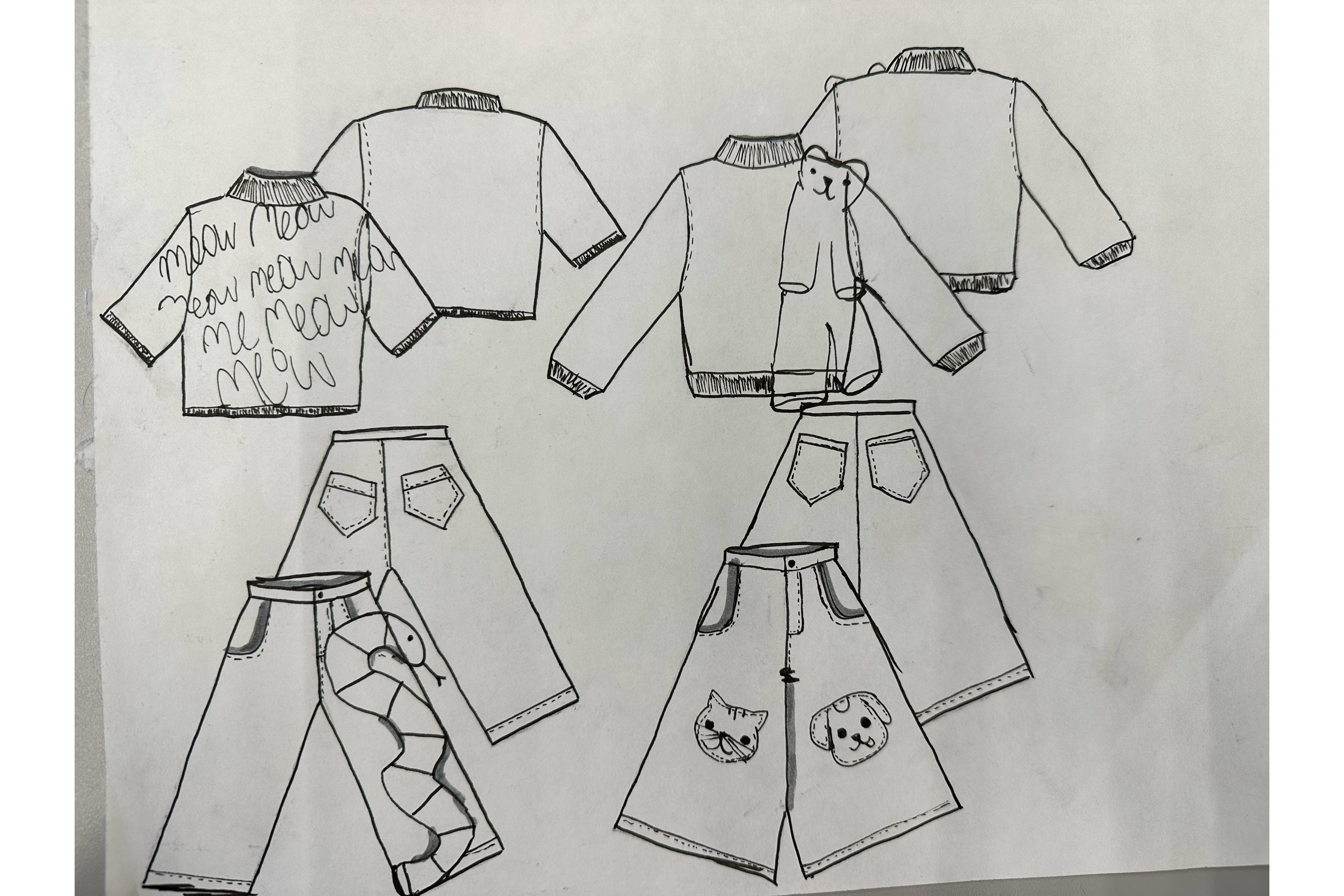
Flat Sketch Line Sheet by Ben Arevalo
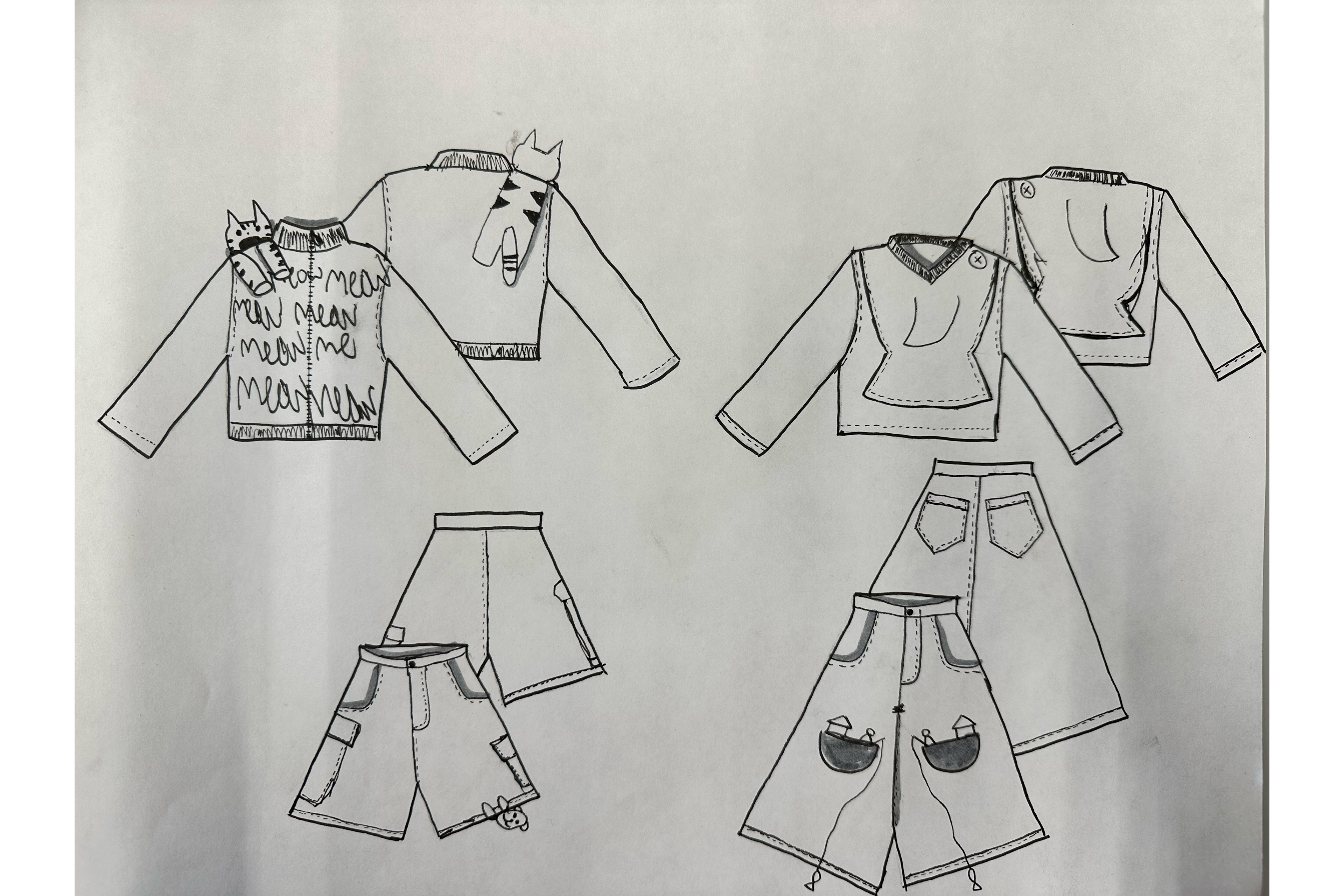
Flat Sketch Line Sheet by Ben Arevalo
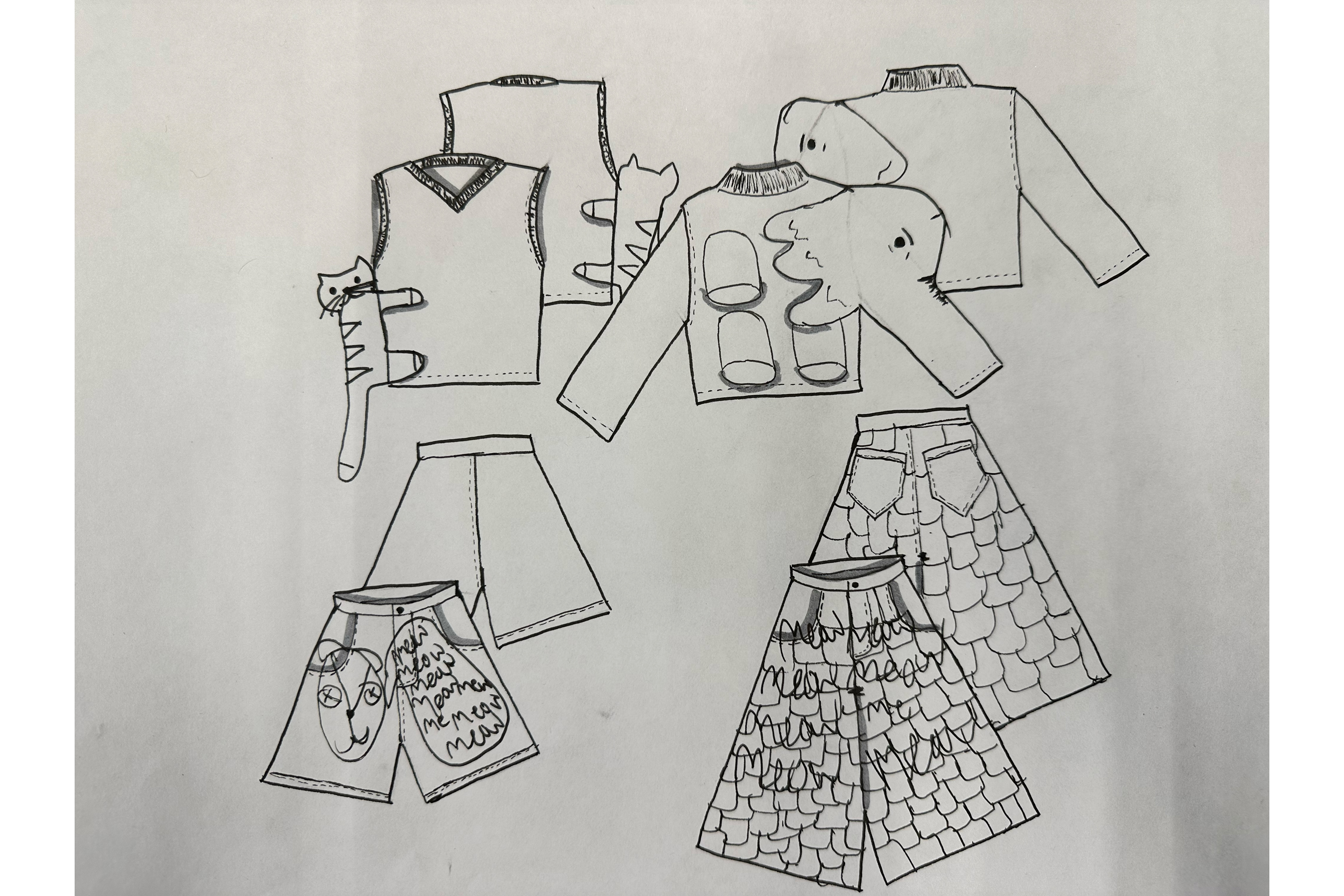
Flat Sketch Line Sheet by Ben Arevalo
Final Collection by student Ben Arevalo
Gesture Drawing
This week's assignment will challenge you to practice some of the techniques introduced this week, focusing on developing the body of your fashion figure through gesture drawing.
Assignment Parameters:
Each student must execute a minimum of twenty poses using the fashion figure whom they have identified, in various poses.
Gesture Poses by Heatwave

Female Gesture Poses by Heatwave

Female Gesture Poses by Heatwave

Female Gesture Poses by Heatwave

Female Gesture Poses by Heatwave
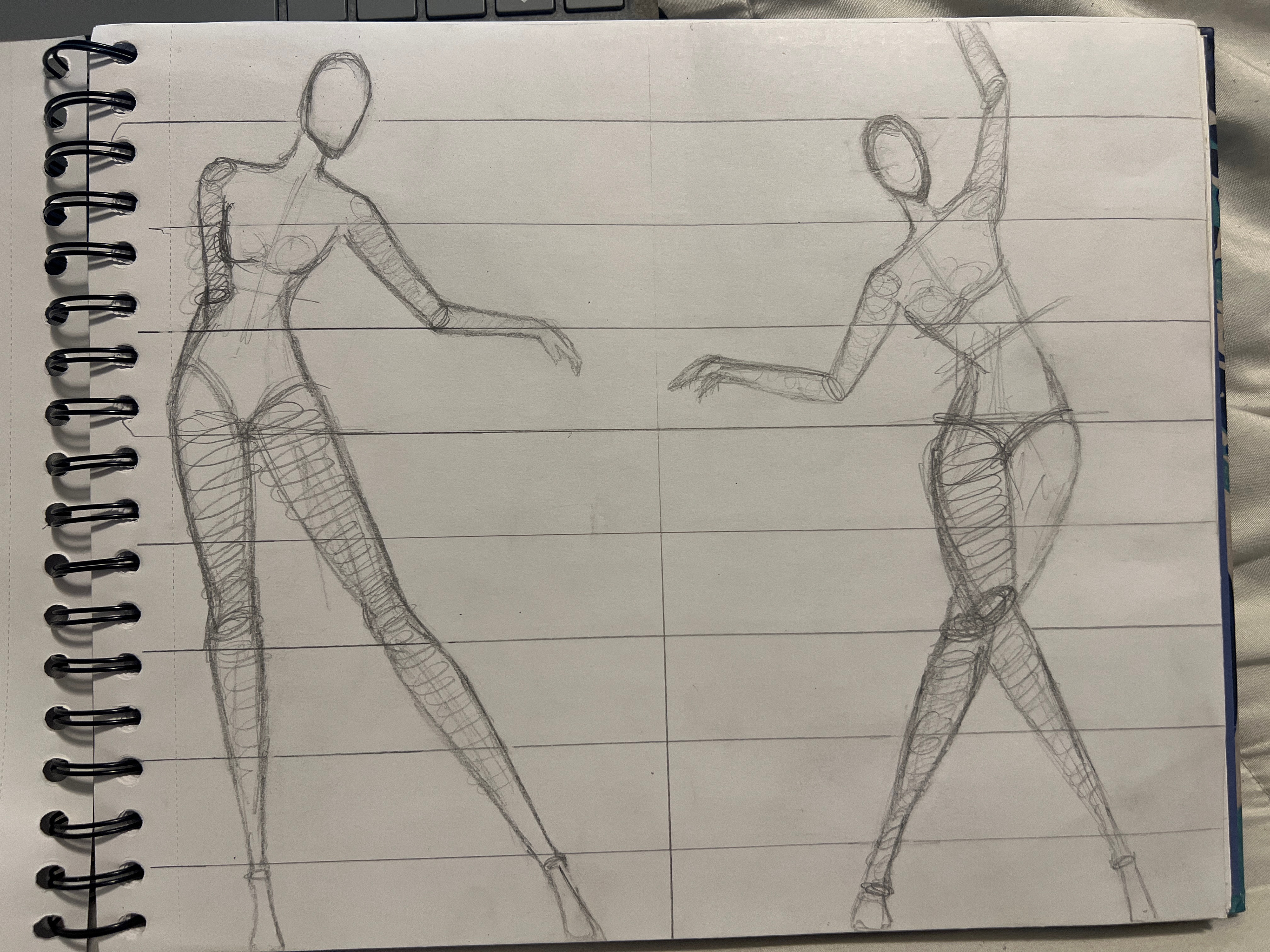
Female Gesture Poses by Heatwave
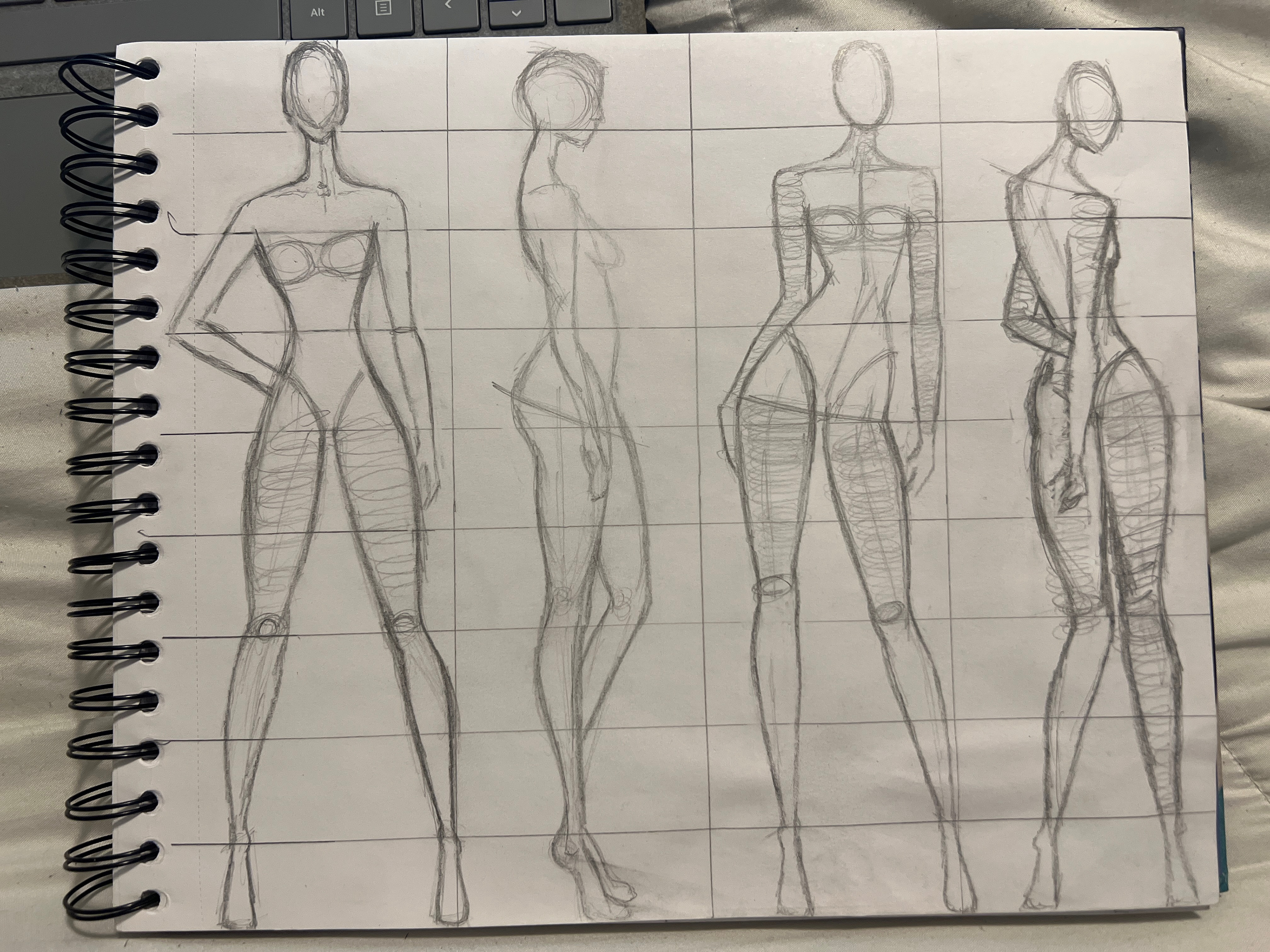
Female Gesture Poses by Heatwave
Face Studies
This week's assignment will challenge you to practice some of the techniques introduced this week, focusing on developing a style for your fashion figure by detailing the faces.
Assignment Parameters:
Each student must submit ten examples from each of these categories (twenty faces total):
A.) Male Faces
B.) Female Faces
Faces must remain to scale with the rest of the fashion figures being developed.
Face Studies by student Ben Arevalo
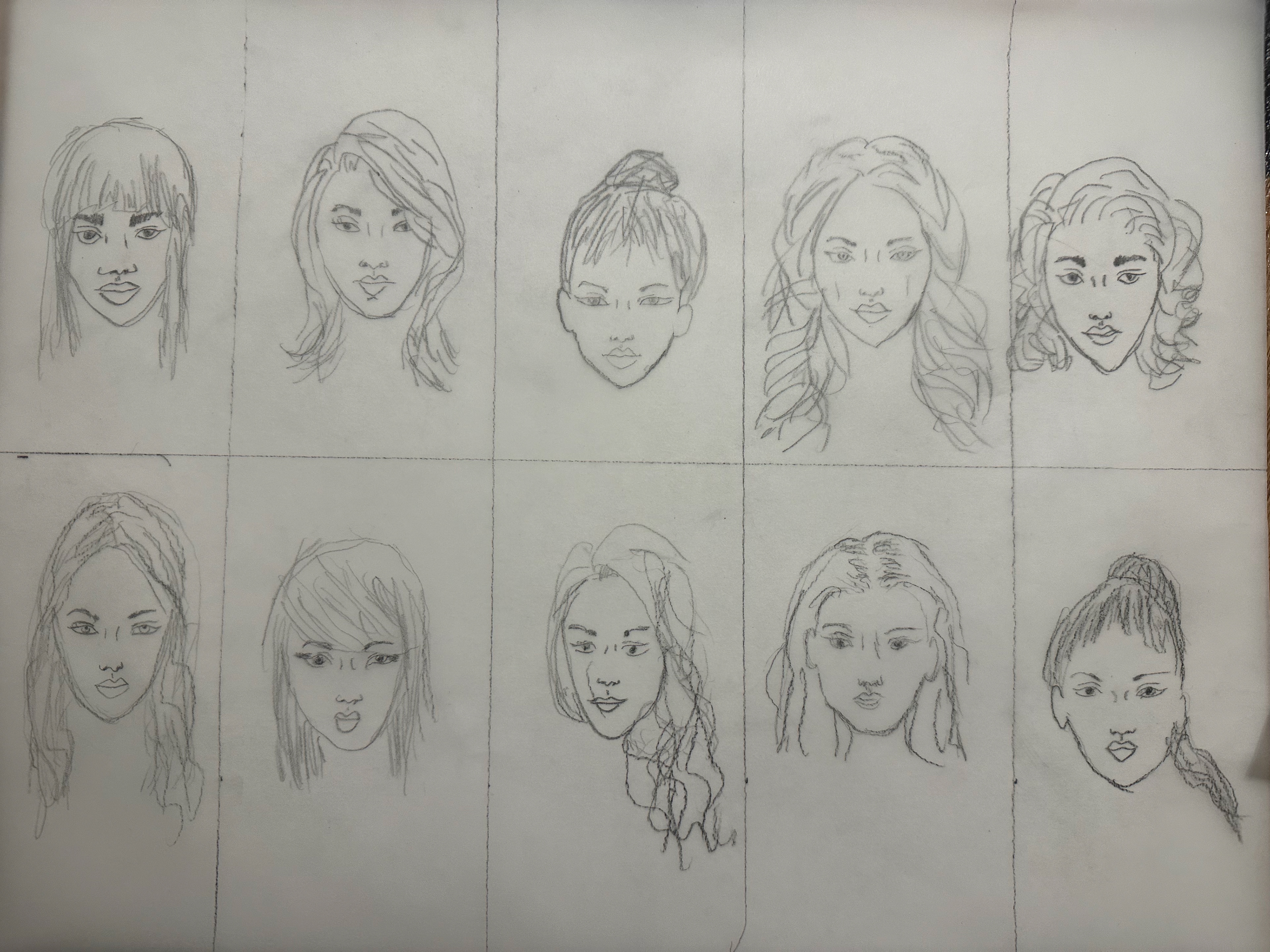
Female Faces by student Ben Arevalo
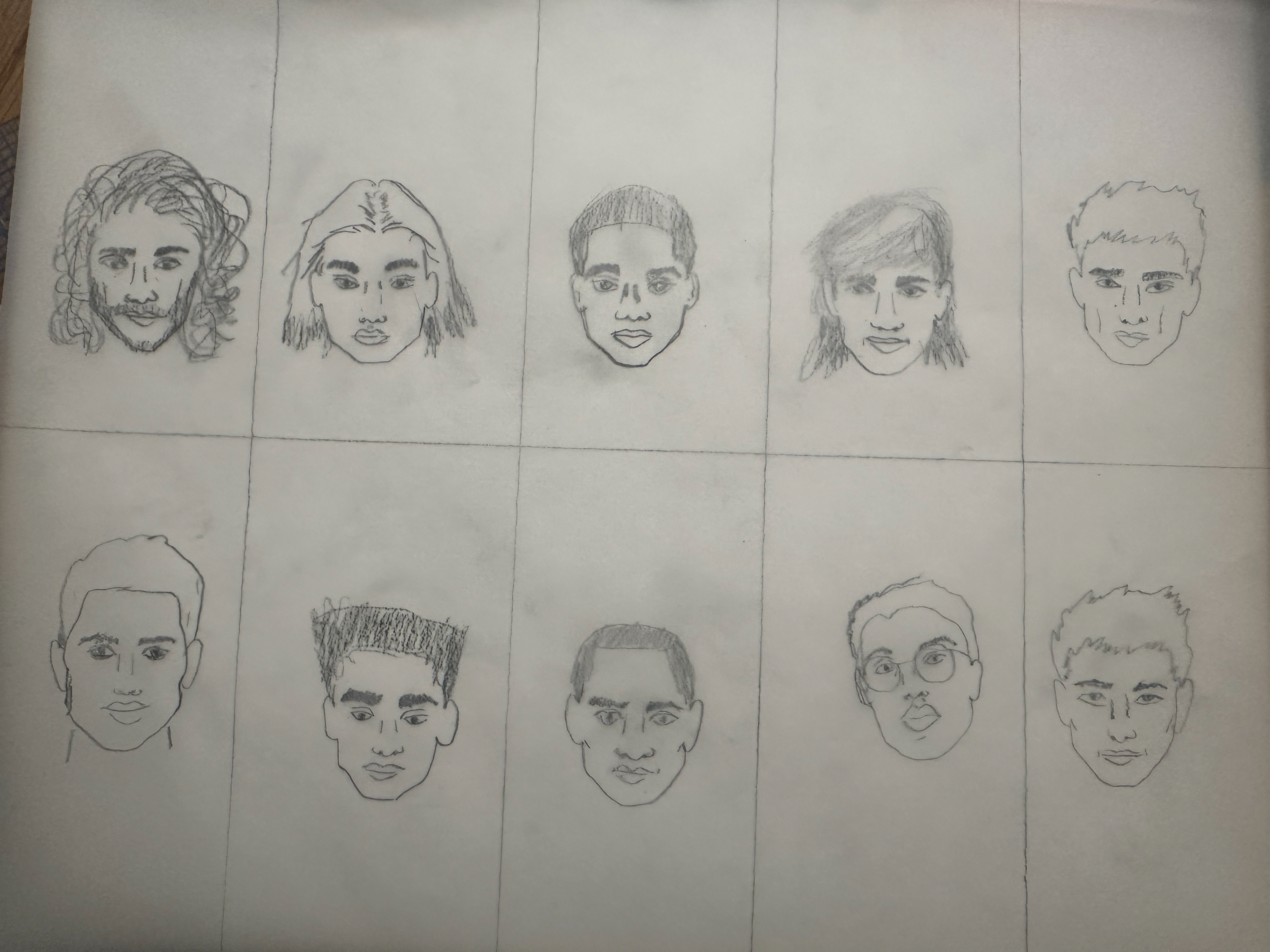
Male Faces by student Ben Arevalo
Face Studies by student Chloe Doerr
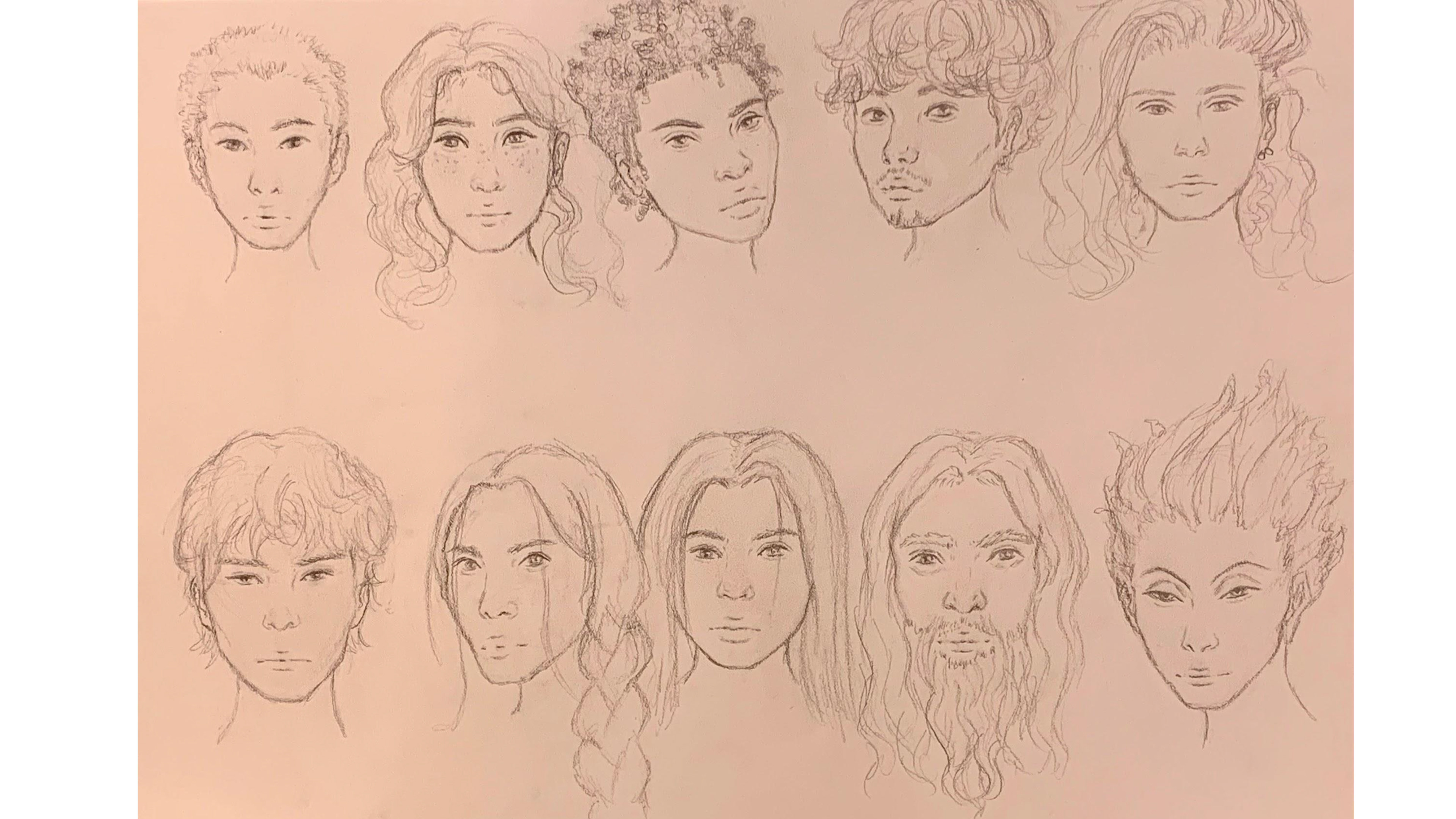
Male and Female Face Studies by Chloe Doerr

Female Face Studies by Chloe Doerr
Flat Sketch Line Sheet
This week's assignment will challenge you to practice some of the techniques introduced this week, focusing on developing a style for your fashion figure by detailing the faces.
Project Background:
One of the most critical skills of an assistant designer is to accurately and effectively be able to translate a garment or idea into a flat sketch. The purpose of the matte drawing is to convey as much detailed information as possible, in a visual format, of the garment based on how it is constructed and should fit on the body.
Fashion is an international industry; therefore, the sketch often must "speak" in visuals without words. "flat sketch" refers to the garment laid out flat on a table. These sketches are often used for multiple purposes: selling ideas to a buyer and explaining your concepts to your production team.
The first goal is that the flat sketch must be clear and well-executed enough to be an effective selling tool. The second goal is that the flat graphic should be accurate and detailed to effectively produce a duplicate counter sample. This requires that the illustrations be symmetric, drawn to scale (proportion to your base croquis template) and contain enough information about stitching and construction that your vendor understands finishing details.
Flat Sketch Line Sheet by sophomore student Raegan Starling
Flat Sketch Line Sheet by student Diana Dominguez Castro
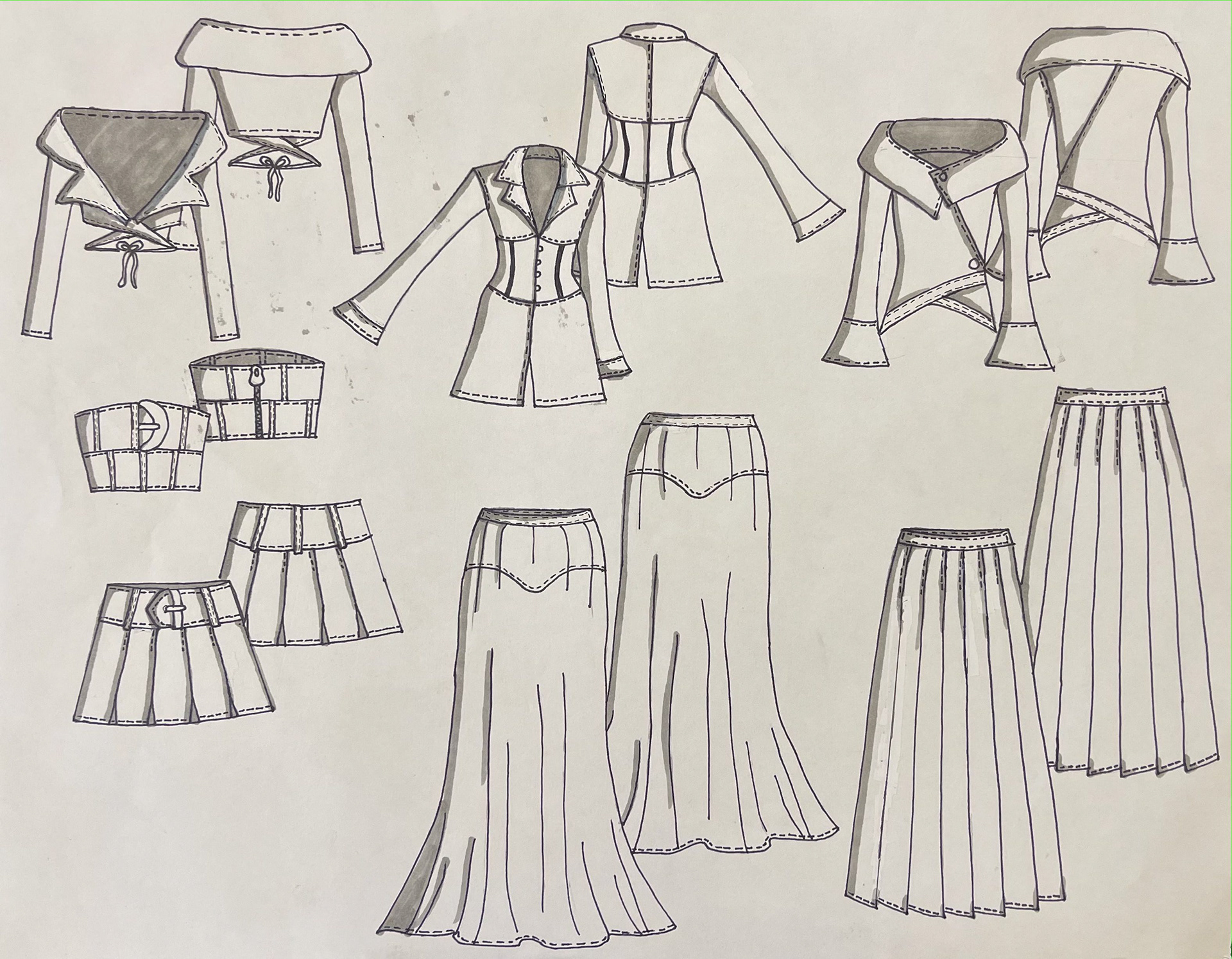
Flat Sketch Line Sheet by student Nikita Pokhrel
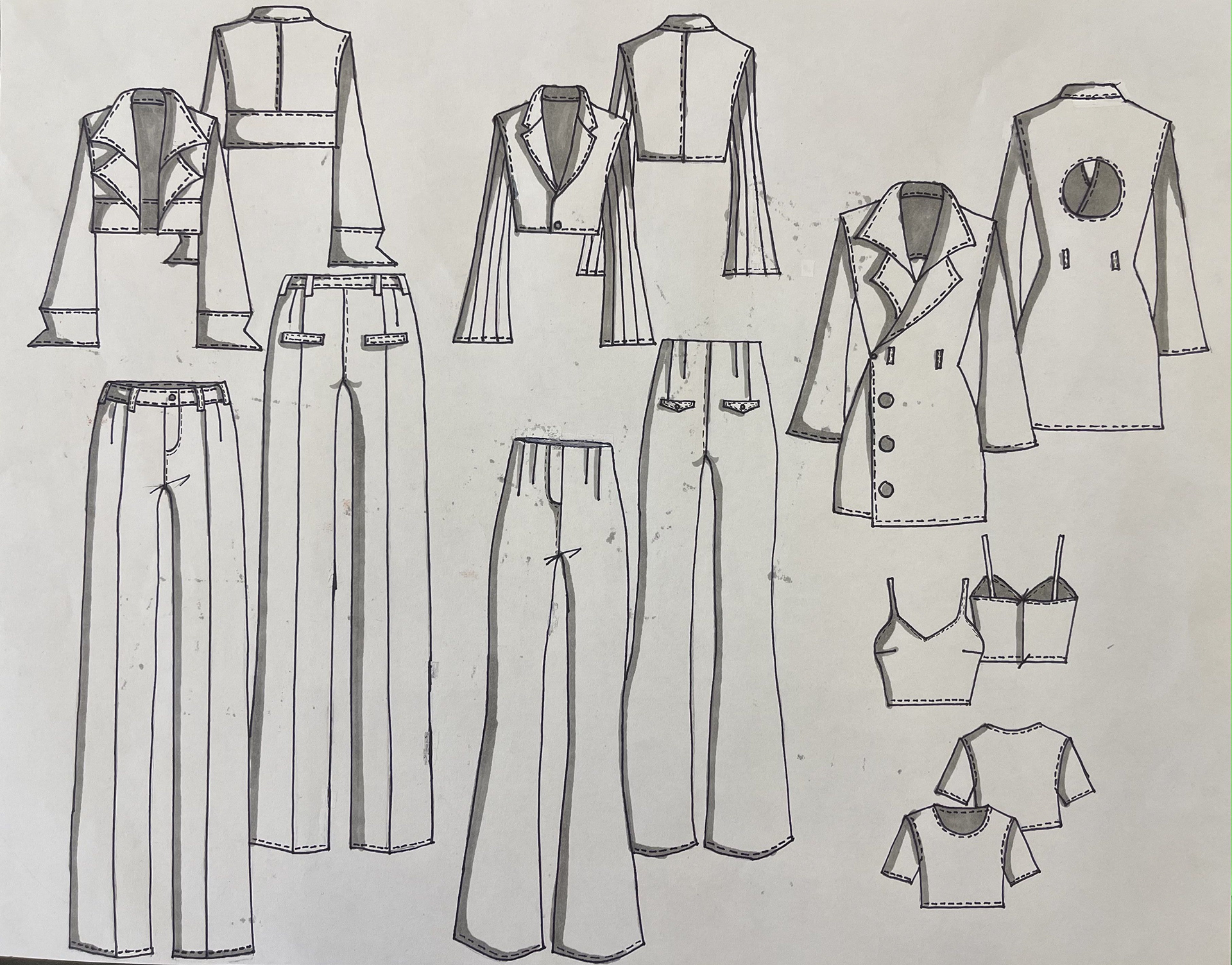
Flat Sketch Line Sheet by student Nikita Pokhrel
Flat Sketch Line Sheet by sophomore student Nikita Pokhrel
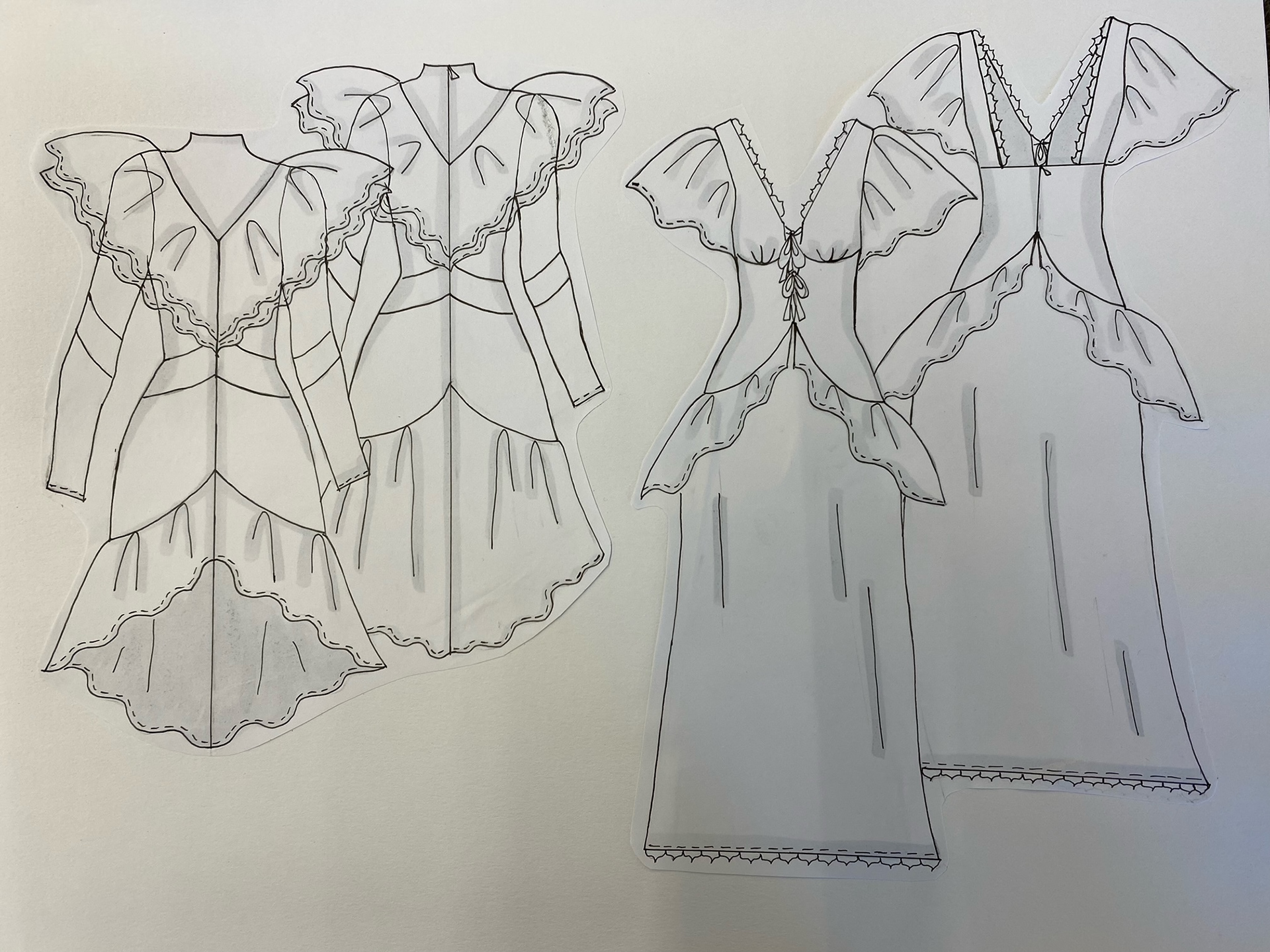
Line Sheet by student Bella Dubs
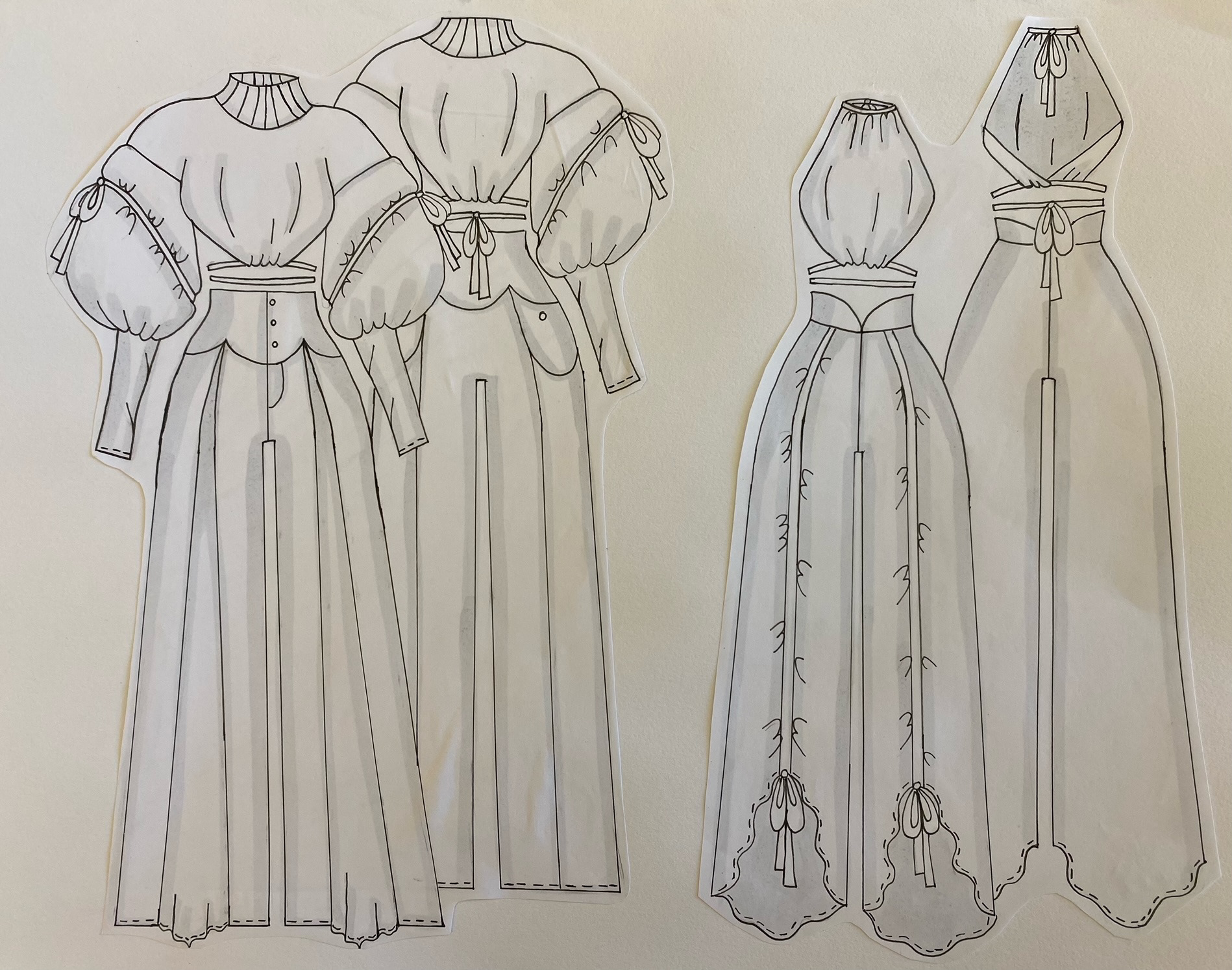
Line Sheet by student Bella Dubs
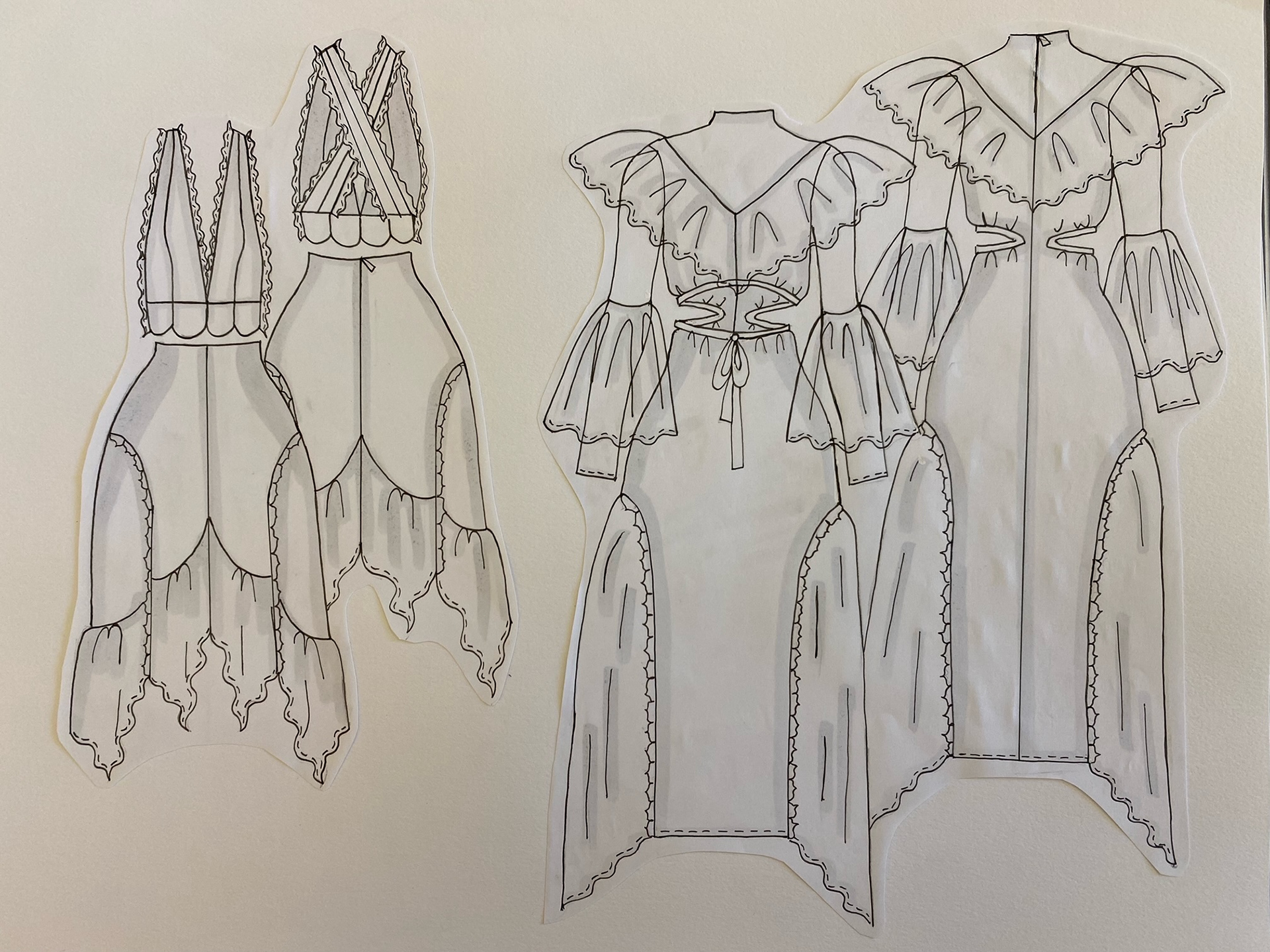
Line Sheet by student Bella Dubs
Flat Sketch Line Sheet by sophomore student Bella Dubose
Mood and Concept Boards
This week we discussed essential merchandising strategies which designers use as part of their pre-collection development process in our Monday Collection Pre-Development: Textiles, Trends, and Customer Profiles: Building your Fashion Pyramid.
For this week's assignment, you will begin your own process of pre-development for your first collection design project.
Project Background:
In two week's you will design the concepts for a group of six related sportswear ensembles, which will include related top and bottom type garments (referred to as coordinated separates in the apparel industry.)
Based on what we discussed regarding the fashion pyramid, your collection should include a strategy for your sportswear brand's basic, essential, and fashion items.
But before we begin designing, we must first finalize on a vision for WHO our customer is, and WHAT materials (textiles, trims, etc) we plan to design with- this means developing a strategy which lays out WHO is our target customer (using a customer profile board) Download customer profile board)and WHAT materials your line will be comprised of (using a blend of a Mood and Concept board).
Assignment Details:
Your blended Mood/Concept board should be comprised of garment images to indicate some of the design concepts you which you incorporate into your proposed collection, an indication of the type of fashion persona you are designing for (target customer), and include fabric/color swatches to indicate your materials menu and color story for that particular season/delivery.
Mood Board by sophomore Zayn Hussain

Mood Board by sophomore Aaliyah Ouzel

Mood Board by sophomore Holly Sullivan
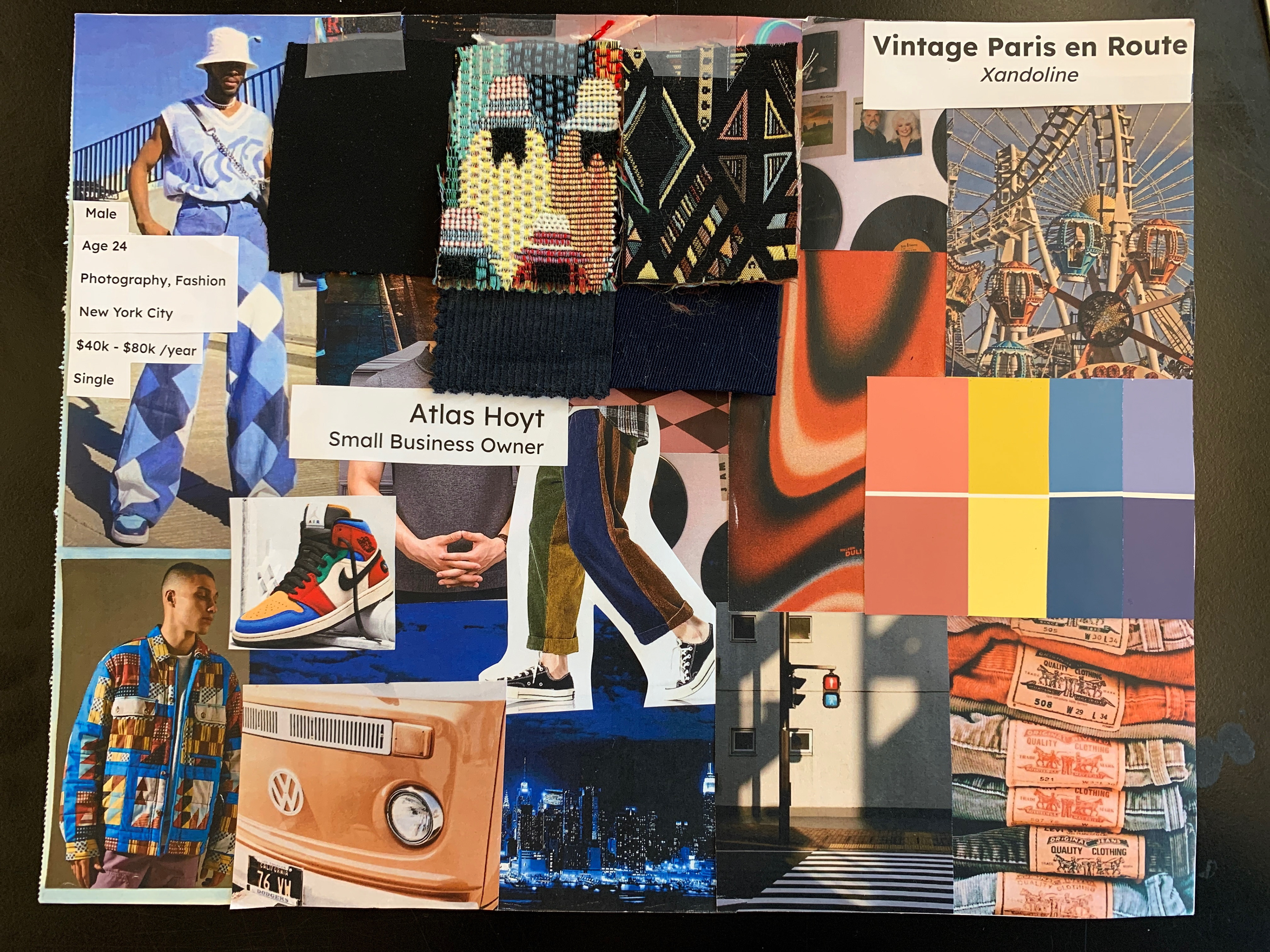
Mood Board by sophomore Alexander Short
Concept Sketches
This week we launched your first Collection Design project, which involved reviewing your Mood Boards.
Project Background:
The next step is to begin concept development to figure out what garments you plan to include this is collection, based on the materials, color, and aesthetic choices you included in your Mood Boards specific to your chosen Target Customer.
Assignment Details:
Your goal is to develop as MANY concept sketch ideas (rough sketches) as needed in order to effectively determine what will be included in your collection assortment. We call this an Iterative Design Process, which is explained in further detail in this powerpoint lecture:
In the example, above, the fashion figure is clothed with garments which include information that indicates garment construction features, such as seaming, finishing, and closures.
You can also choose to focus on specific garment details, such as the sleeve, collar, or other attributes, as shown in this example based on my student work illustrating concept sketches for garment details.
Another purpose for your iterative concept sketching would be to begin to consider the color assortment for your proposed group delivery, as shown here in this notebook example, made using watercolor paint and colored pencil (from my sophomore year as a fashion student):
Concept Sketches by student Aaliyah. Uzzel.
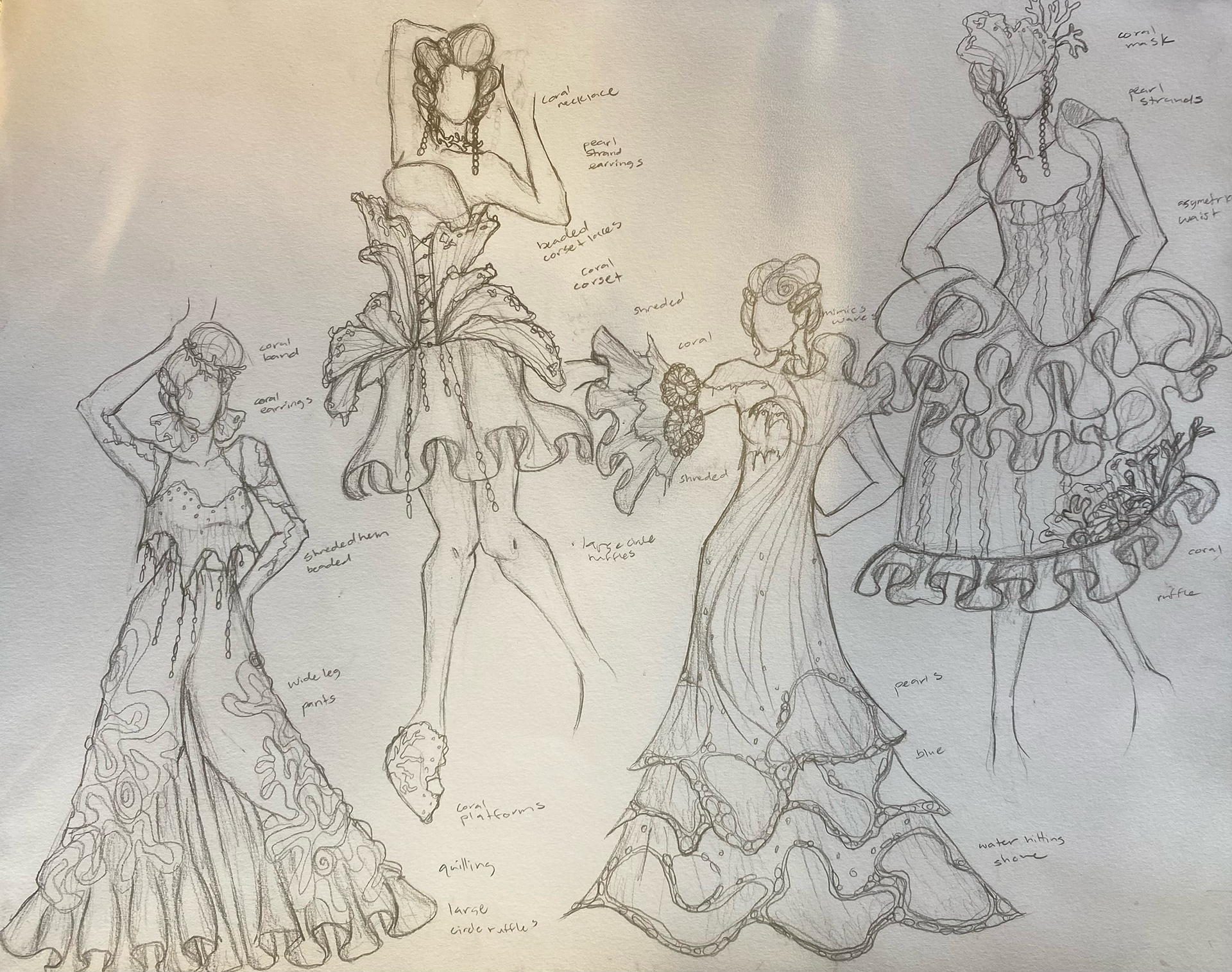
Concept Sketches by student Bella DuBose
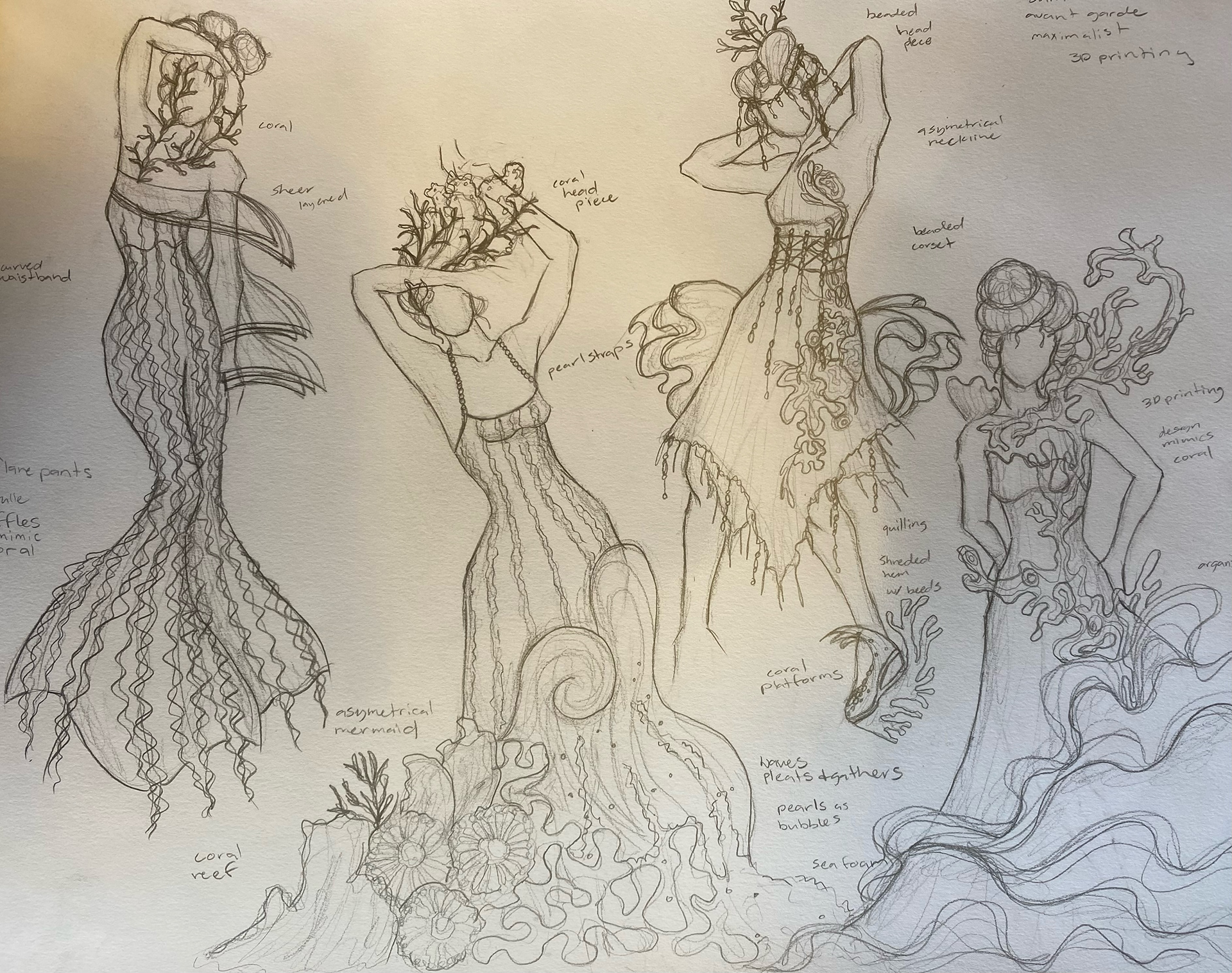
Concept Sketches by student Bella Dubose
Concept Sketches by student Bella Dubose
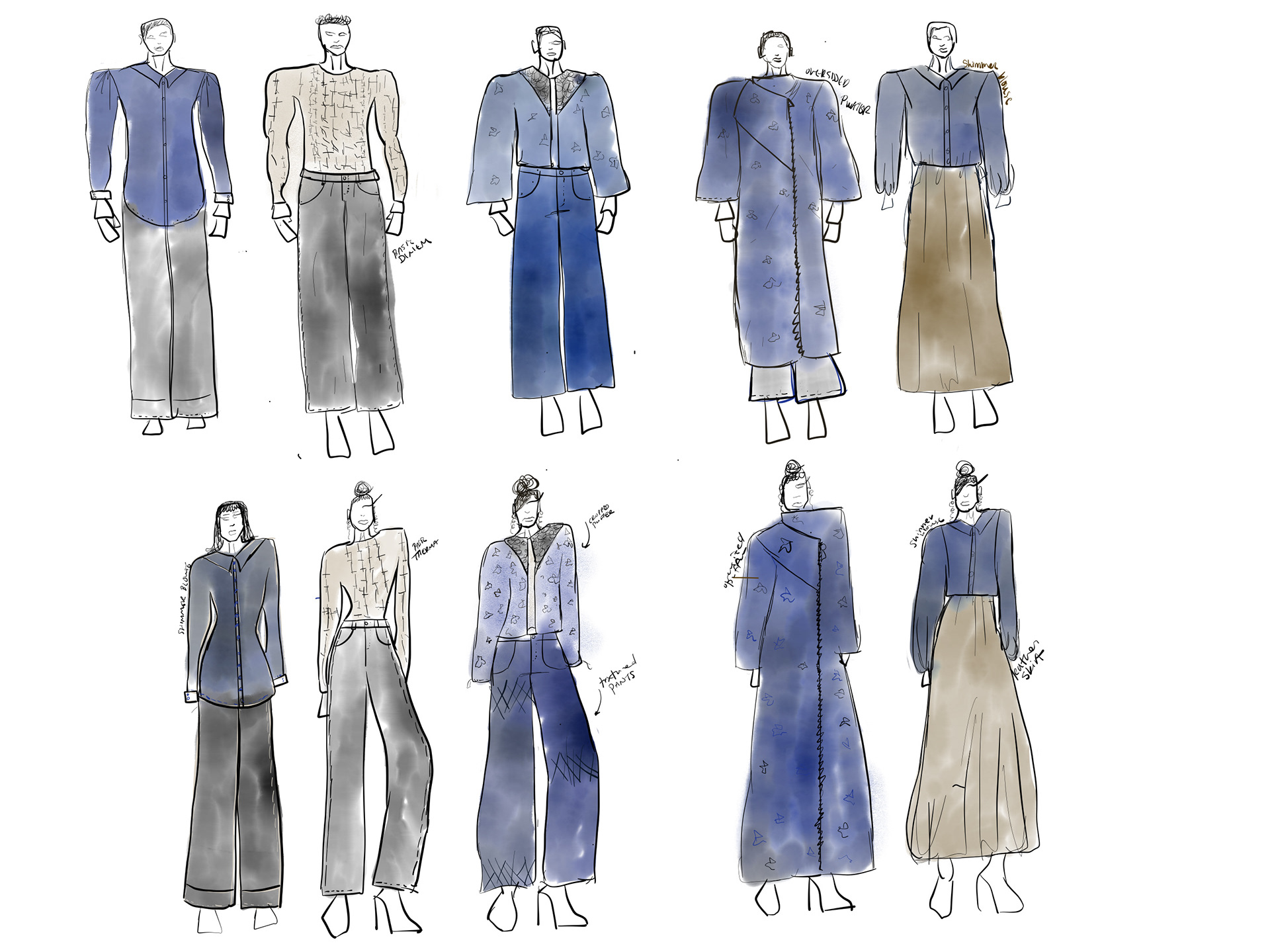
Concept Sketches by student Hannah Todaro
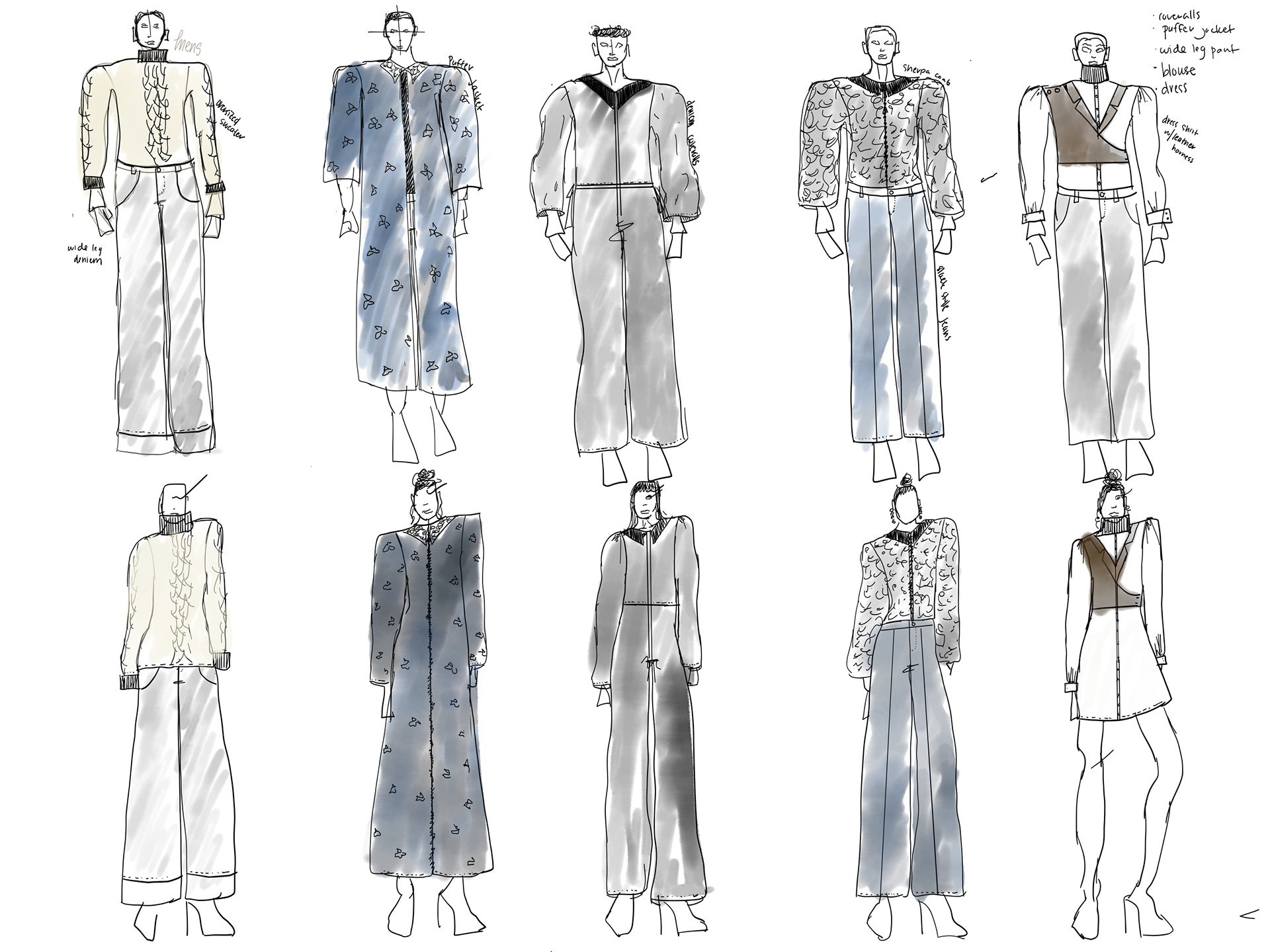
Concept Sketches by student Hannah Todaro
Concept Sketches by student Hannah Todaro
Concept Sketches by student Phat Nguyen
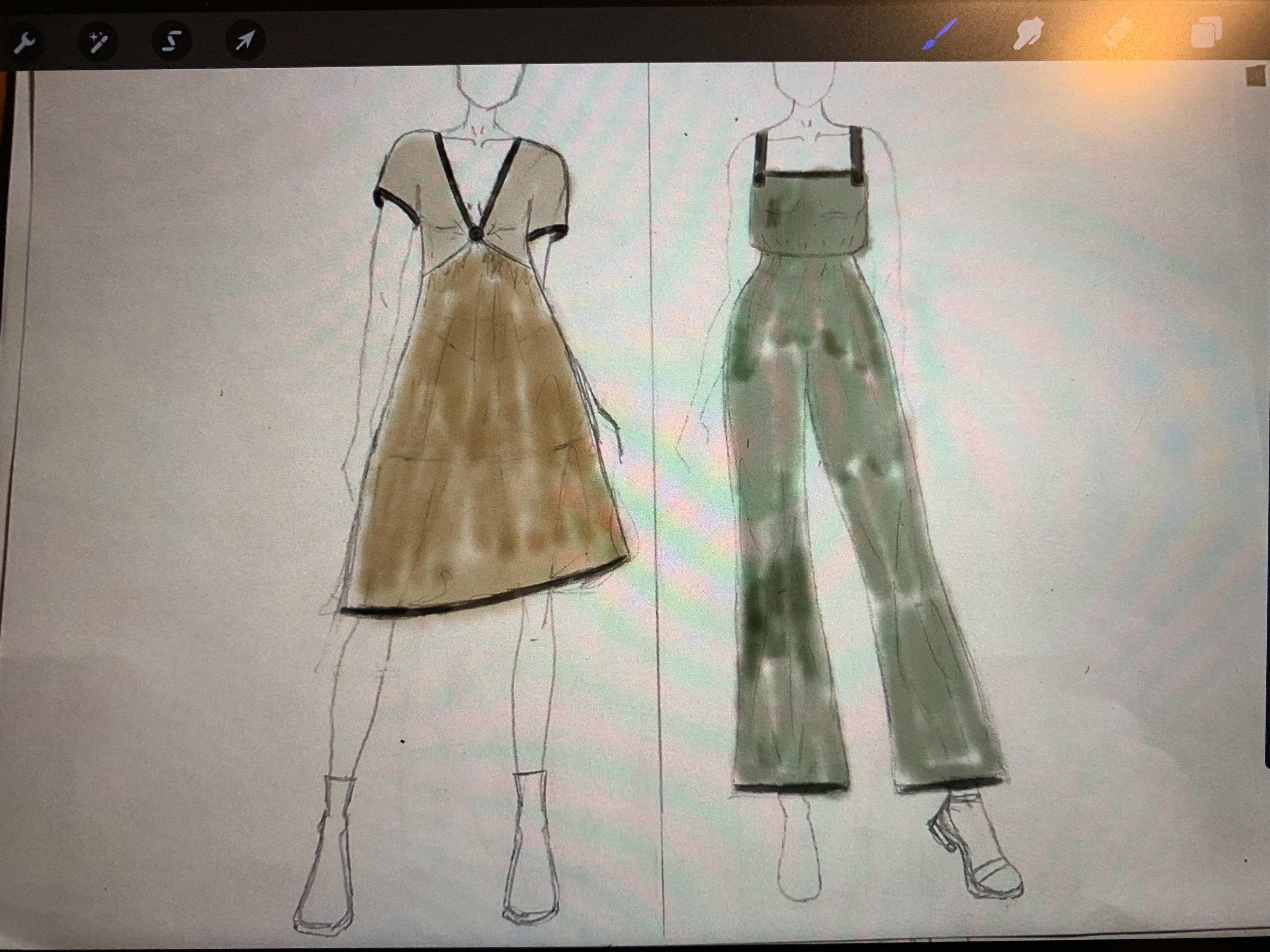
Concept Sketches by student Ivy Nadal
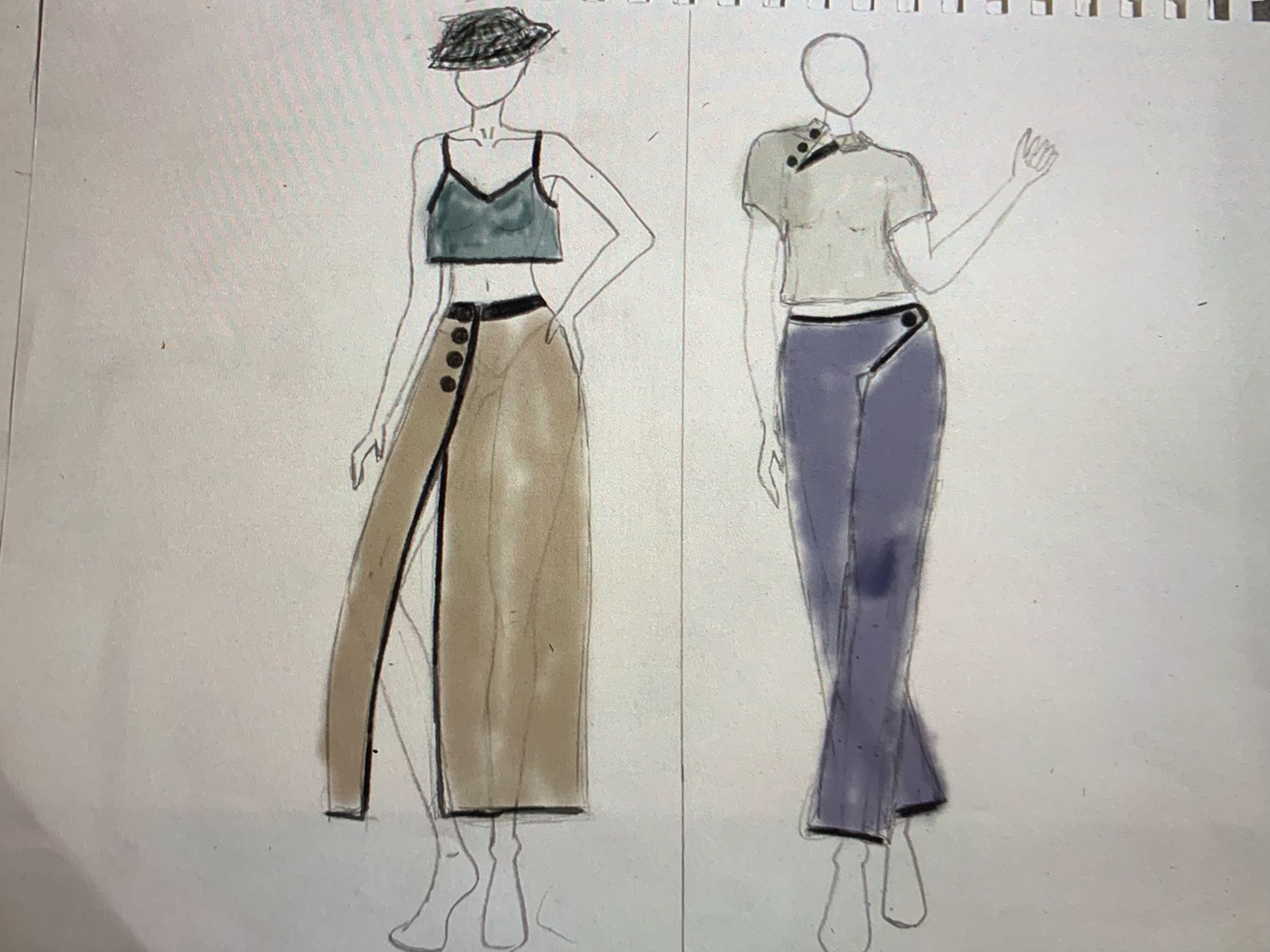
Concept Sketches by student Ivy Nadal
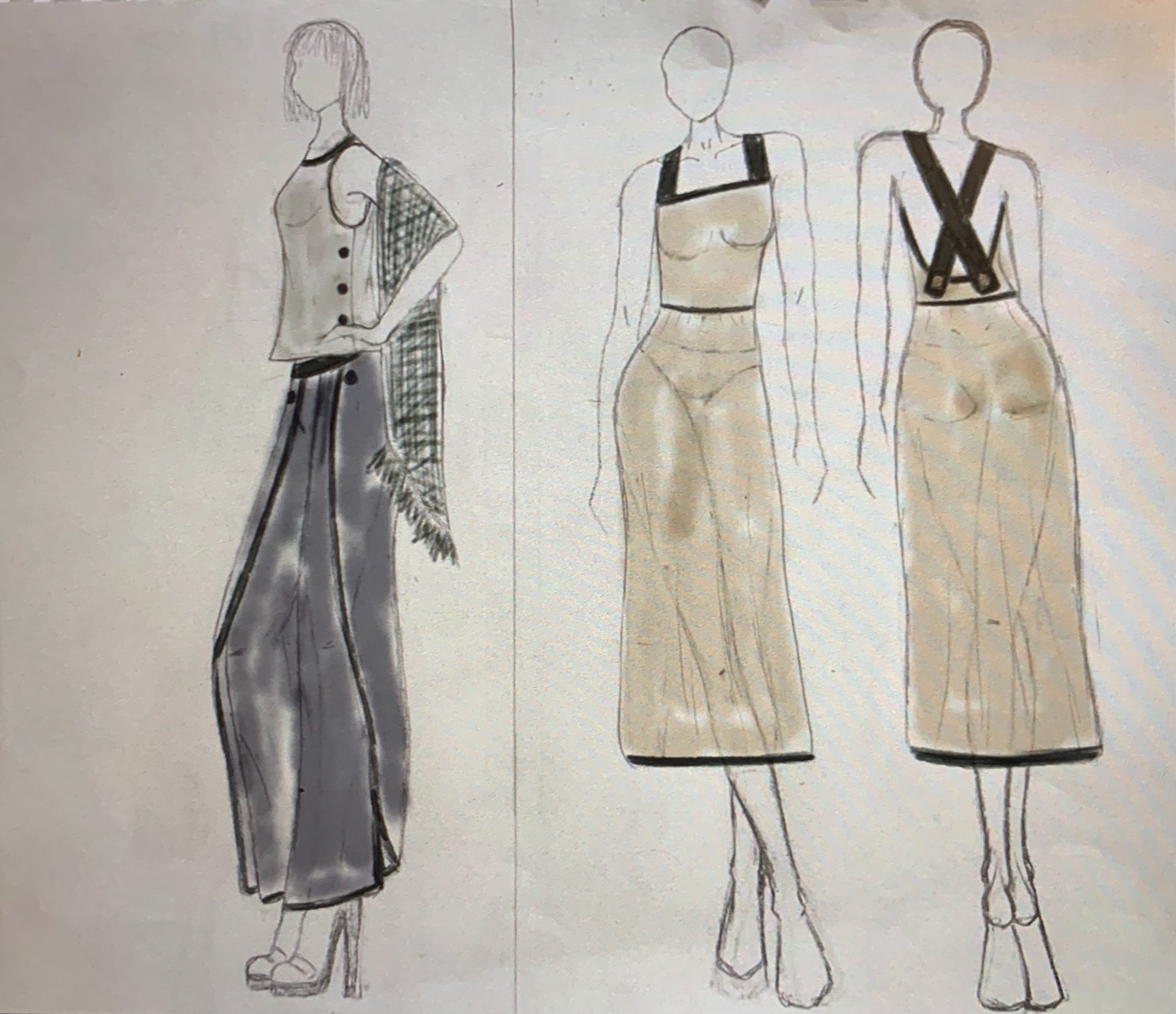
Concept Sketches by student Ivy Nadal
Concept Sketches by student Ivy Nadal
Concept Sketches by student Aaliyah Uzzel.
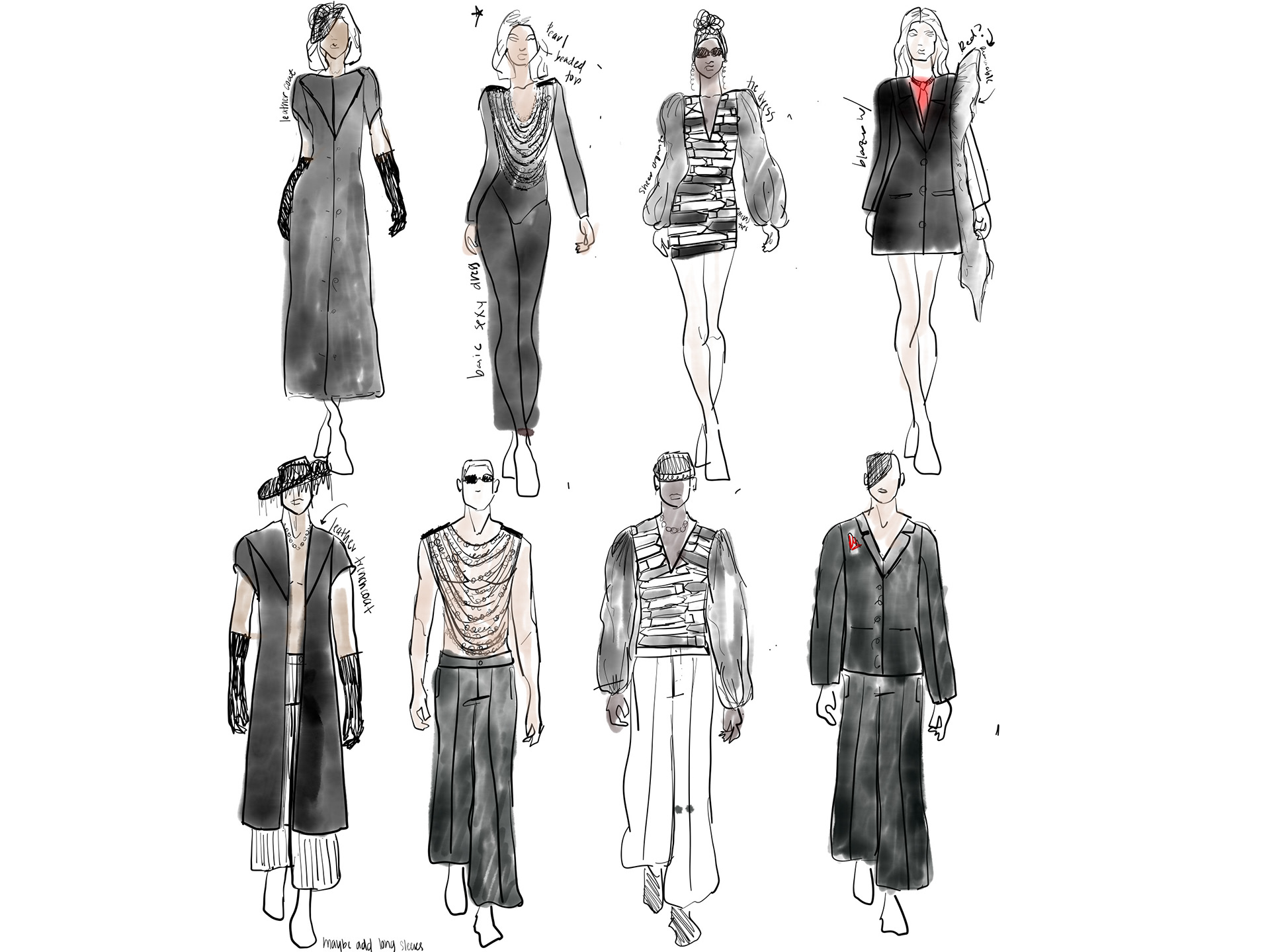
Concept Sketches by Hannah Todaro

Concept Sketches by Hannah Todaro
Concept Sketches by student Hannah Todaro
Watercolor Skintone Rendering
This week we explore the first step in our collection development process, which focuses how to illustrate our fashion figures using Watercolor paint medium to render skin tones for our fashion illustrations.
Watercolor paint renderings (and it's sister medium, guache) have been the historical gold standard for fashion illustration for presentation and visual communication of product ideas.
The Watercolor Fashion Rendering is meant to visually represent the target customer profile as well as the fabrication and construction specifications of a garment or accessory product, illustrated as an approximation of the overall aesthetic vision of the creative designer.
Assignment Details:
The goal is to practice as many skin tones you may need in order to effectively render your upcoming designed collection, based on the target customer you included in your Mood Board.
Students must first TRACE their fashion figures onto appropriate paper, and then PAINT in the skin tones using watercolor paint, indicating both light and shadows.
The goal is to practice as many skin tones you may need in order to effectively render your upcoming designed collection, based on the target customer you included in your Mood Board.
Students must first TRACE their fashion figures onto appropriate paper, and then PAINT in the skin tones using watercolor paint, indicating both light and shadows.
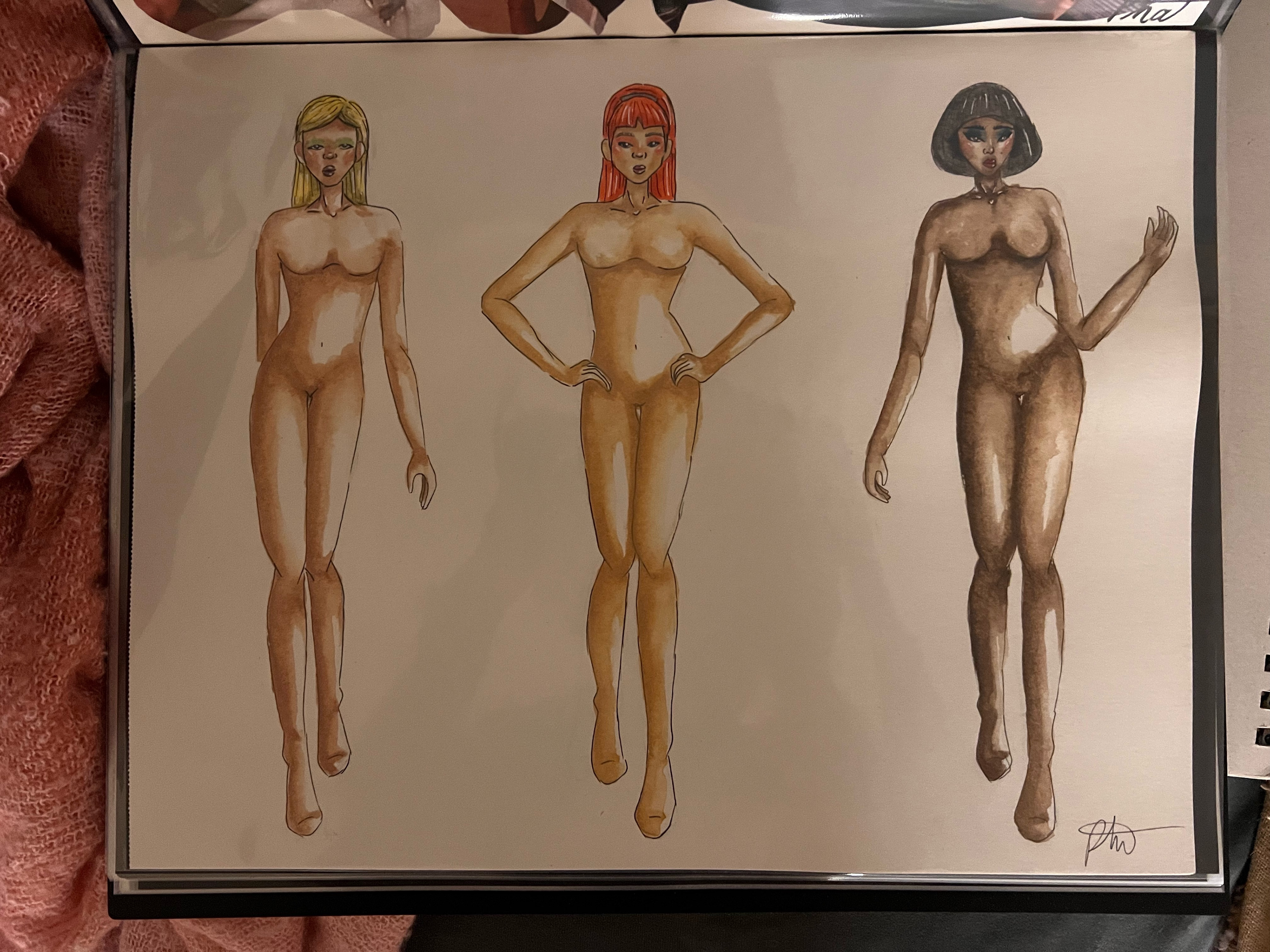
Watercolor Skintone Rendering by student Vince Phat Nguyen
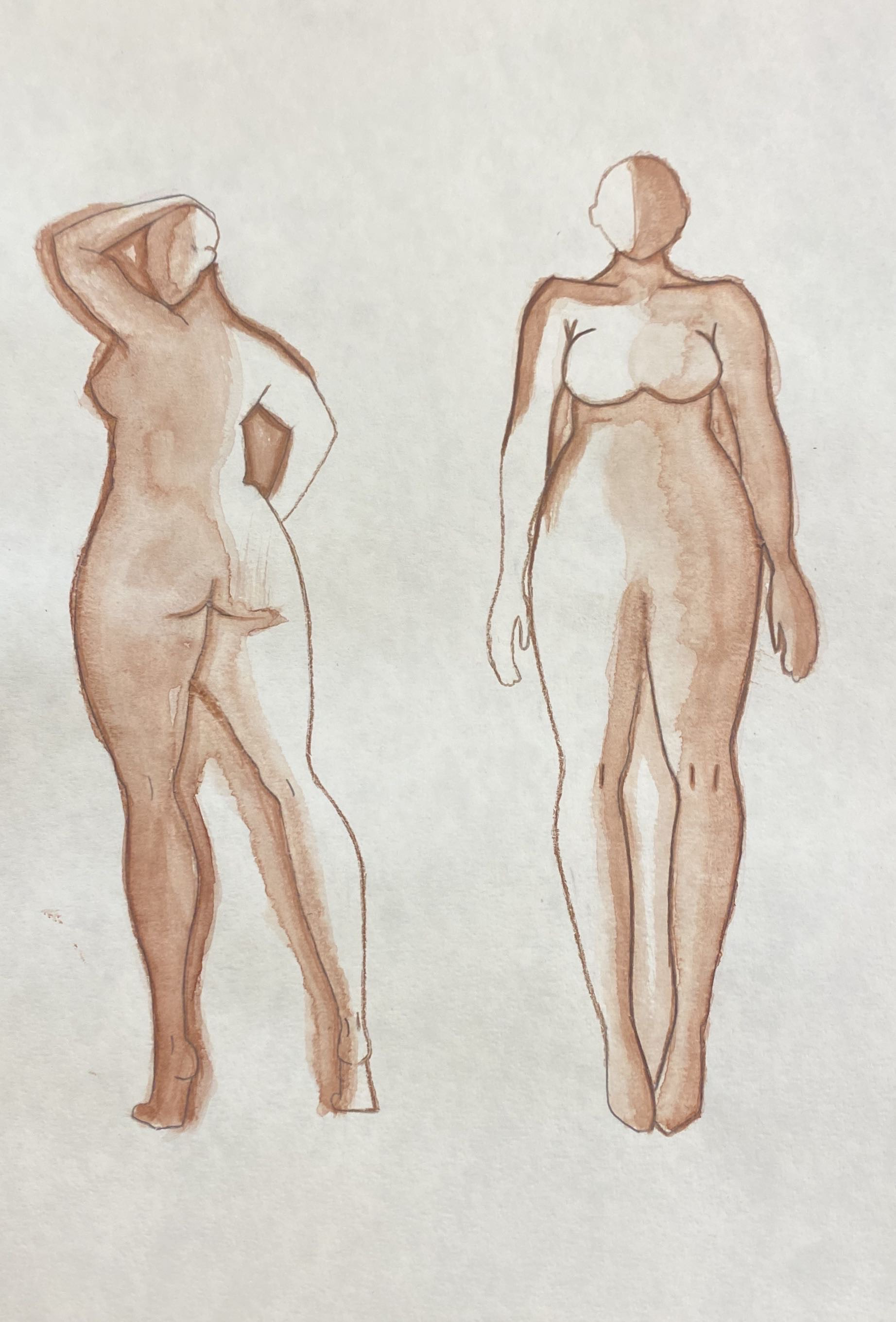
Watercolor Skintone Rendering by student Diana Dominguez

